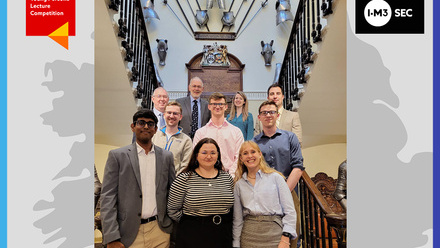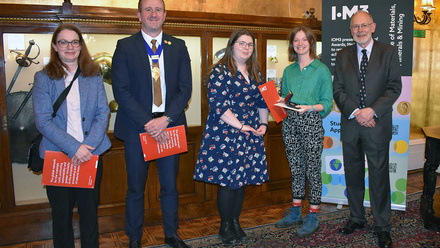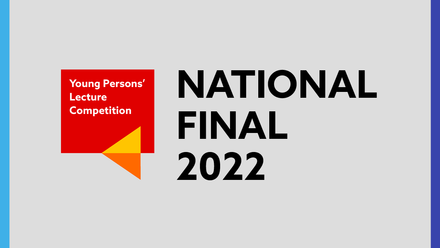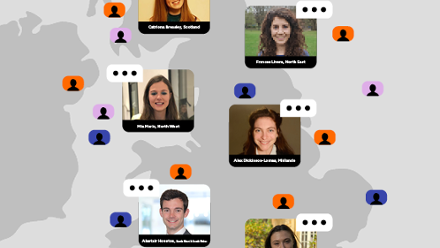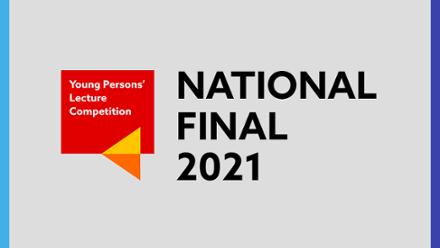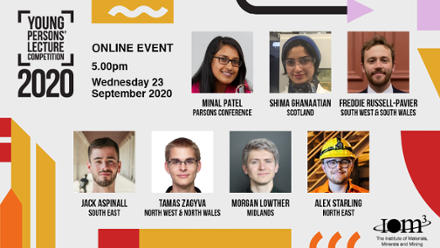Past Young Persons' Lecture Competitions finalists' details.
2025 final - 8 May | The Armourers' Hall, London
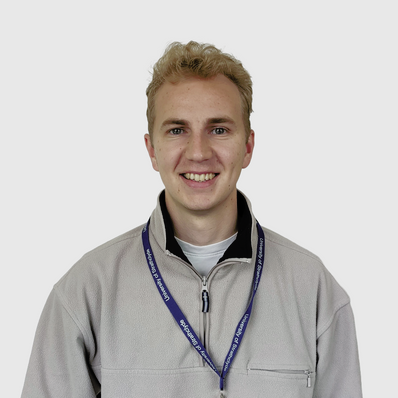
Winner | Scotland
Hamish Dow
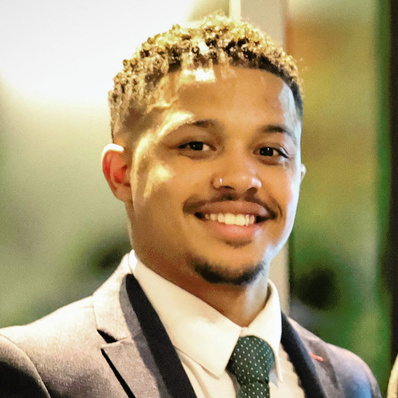
2nd Place | South West & South Wales
Samual Ngombe
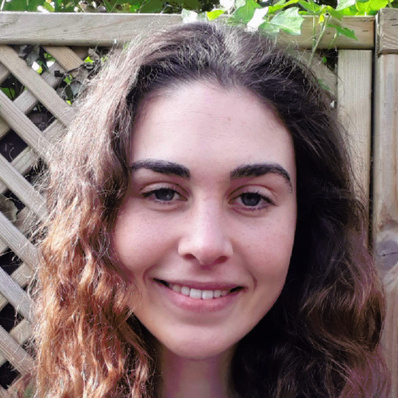
3rd Place | South East
Emma Bryan

North West & North Wales
Sethupathi Rangaraj
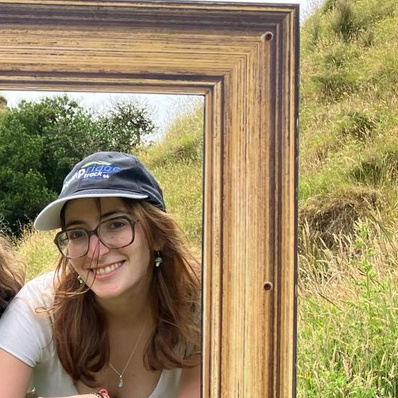
Midlands
Amelia Tortell Milhano
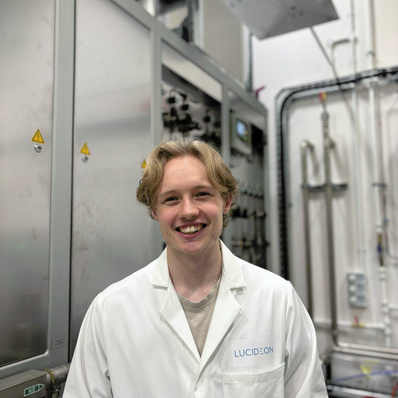
North East
Ethan Ellis

Winner | Scotland
Hamish Dow
Dr Hamish Dow is a Research Associate at the University of Strathclyde’s Department of Civil and Environmental Engineering. His research investigates novel AI-based imaging methods for detecting and quantifying concrete structure defects. Hamish's lecture will explain how AI can be used for visual inspections, highlight innovative concrete inspection methods developed at the University of Strathclyde, and present real-world, Strathclyde-led, case studies demonstrating AI-driven inspection applications.
Lights, camera, action: Automated visual inspections of concrete structures
Early identification of defects in concrete structures is vital to ensuring their longevity and resilience. However, traditional visual inspections are expensive, inconsistent, labour-intensive, and dangerous.
Our invention, Adaptive Lighting for the Inspection of Concrete Structures (ALICS), is a new inspection platform: it is an automated, and robot-mountable concrete visual inspection device that uses lighting and artificial intelligence to detect, classify, quantify, and monitor concrete defects with unprecedented speed, accuracy, and precision.
ALICS’s lighting-enhanced inspection method enables fast, targeted concrete defect repair and monitoring of concrete infrastructure, extending asset lifespans and reducing carbon-intensive new-build construction.
This presentation will showcase ALICS’s lighting-enhanced inspection method and concrete defect detection abilities. Results from on-site deployment will also be presented, validating ALICS’s methods in a real-world environment.

2nd Place | South West & South Wales
Samual Ngombe
Samual is a third-year EngD student at Swansea University, working on scaling up the commercial potential of next-generation perovskite solar cells. His presentation focuses on a game-changing solar technology developed by Power Roll, exploring how it works, why it matters and the powerful role solar energy can play in addressing our global energy challenges. With the world striving to meet Net Zero goals, Samual is determined to contribute to real-world solutions.
Aside from his research (which often means spending quality time in a cleanroom suit and hair net), Samual has done his fair share of American Football (both playing and coaching). He is a huge advocate for sustainable living and believe that access to clean energy should be universal, no matter the circumstances. Hopefully, he can not only share some insights but also alter your perspective on solar energy, showing how something as small as micro groove can have a big effect on the global democratisation of energy.
From grooves to grid: The next generation of solar technology
Power Roll has pioneered a fully R2R production process based on their novel architecture. This involves embossing microgrooves onto a flexible substrate, followed by directional deposition of electrodes and charge transport layers on opposite faces of each groove. R2R perovskite deposition and encapsulation finish the PV modules in a highly scalable low-cost manufacturing process.

3rd Place | South East
Emma Bryan
Emma is a PhD student in the Materials department at Imperial College London, researching molecular semiconductors. These materials are enabling advances in the field of organic electronics, from more flexible, lightweight and wearable devices to brighter, more energy efficient displays and solar cells. Her PhD focuses on the characterisation of these next-generation materials, understanding their structure and conductive properties, particularly using scanning probe methods which is the subject of her presentation!
Outside her PhD Emma enjoys creative writing, painting and music. She believes there’s a big overlap between art and science, so loves anything that explores this space. She also enjoys designing outreach activities and volunteering to help inspire the next generation of scientists and engineers.
An ode to conductive probes
Atomic Force Microscopy (AFM) is a fantastic technique for characterising nanoscale properties. AFMs are like a miniature record players: an ultra-sharp ‘tip’ scans over a sample, generating a 3D map of the nano-bumps and grooves. The resolution is so good that, if you’re super careful, you can image individual chemical bonds. AFM is non-destructive and requires no special preparation, which is particularly useful for soft materials that degrade in electron beams. Advanced AFM modes can unlock new nanoscale functional information about materials, which is the basis of my research.
By applying a voltage through a conductive AFM probe, we can excite vibrations in piezoelectric materials which can be measured using the highly sensitive detector. I use piezoresponse force microscopy to create nanoscale patterns in polymers, which are useful in next-generation data storage, and can be used to locally reorient molecular layers. This opens the door to tailored flexible electronic devices.

North West & North Wales
Sethupathi Rangaraj
Sethupathi is a second-year PhD student and a Dean’s Doctoral Scholar in Materials Science (Imaging and Characterization) at the University of Manchester. His research focuses on understanding the failure mechanisms of additively manufactured alloys (AlSi10Mg) using advanced characterization techniques such as 3D Electron Backscatter Diffraction (EBSD) and X-ray Computed Tomography (X-ray CT). He is also driving his research toward real-world impact by collaborating with industries to maximize the value of his PhD.
Apart from research, he is passionate about science communication and outreach. As a Discover Materials Ambassador, he engages with young students through inspiring workshops and hands-on experiments to promote awareness and excitement about materials science. In his free time, he enjoys archery, bouldering, and cooking.
Why can additively manufactured materials fail differently in different directions? Investigating the role of defects
Additive manufacturing (AM) offers enhanced control over material properties and design flexibility, with Laser Powder Bed Fusion (LPBF) enabling the creation of alloys with finely tuned characteristics and minimal material waste. This approach is more sustainable than traditional manufacturing, reducing material consumption and emissions. However, LPBF is prone to defects like lack of fusion and porosity, which can negatively impact mechanical performance. These defects vary in orientation, affecting material behaviour.
Understanding how defect orientation affects mechanical properties is key to improving AM reliability. X-ray CT (Computed Tomography) offers detailed insights into the structure and distribution of defects. This study investigates how defect orientation in LPBF alloys influences mechanical failure, using X-ray CT to assess defect impact. The findings aim to optimize parameters, enhance material quality, and contribute to more reliable and sustainable AM technologies.

Midlands
Amelia Tortell Milhano
Amelia is a Materials Scientist at 4D Medicine Ltd., a startup based at MediCity in Nottingham, where she has worked since graduating with an MEng from the University of Oxford. Her role involves preparing and characterising degradable polymer systems, and 3D printing these materials into a range of commercial medical devices. Amelia grew up in Switzerland and is a dual citizen of Portugal and New Zealand but has found her home in the East Midlands.
Delving into the 4th dimension: 3D printing resorbable polymers for regenerative medicine
In recent years, advancements in additive manufacturing (AM) have unearthed 3D printing as a manufacturing process in its own right. Its inherent design freedom allows for the creation of customisable, complex, small-scale geometries. Innovation in materials chemistry has led to the synthesis of new bioresorbable polymers. The advantages of resorbable medical materials are vast, and their development promises endless novel device concepts.
AM has long been used to produce inorganic medical devices. However, it is not until recently that successful 3D printing of organic, biodegradable materials for medical devices has been accomplished. At 4D Medicine, Digital Light Processing, is used to 3D print a range of devices from a biodegradable resin with tuneable mechanical properties.
In this talk, I will explore the motivation behind combining these two emerging technologies, the materials challenges unearthed in doing so, and the opportunities that this creates for the healthcare industry.

North East
Ethan Ellis
Ethan Ellis is a second-year materials science degree apprentice at Lucideon with the University of Derby. His work involves projects centered around materials development in aerospace and defence applications on advanced ceramics. One self-led project that Ethan is developing is a new ultra-high temperature ceramics processing method. However, Ethan's interest in weird and wonderful materials has inspired him to give this lecture on Synthetic spider silk.
Synthetic spider silk: A sustainable future for high-performance materials
Spider silk, renowned for its strength-to-weight ratio surpassing steel, has been challenging to mass-produce because of its complexity. The material's unique structure allows for simultaneous toughness and ductility, setting it apart from traditional materials. Recent discoveries in the production of this material, through genetic engineering of microbes and silkworms, allow for its implementation into real-world applications. This literature review explored the mechanisms, processing, and future applications of synthetic spider silk. The findings show synthetic spider silk demonstrates exceptional mechanical properties of 35-50% elongation and 5GPa tensile strength while remaining biodegradable and biocompatible. Sustainable production methods such as synthesizing proteins at body temperature. These developments position synthetic spider silk as a promising biomaterial with potential applications in medical technology, advanced textiles, and high-performance engineering solutions.
 2024 final - 15 May | The Armourers' Hall, London
2024 final - 15 May | The Armourers' Hall, London
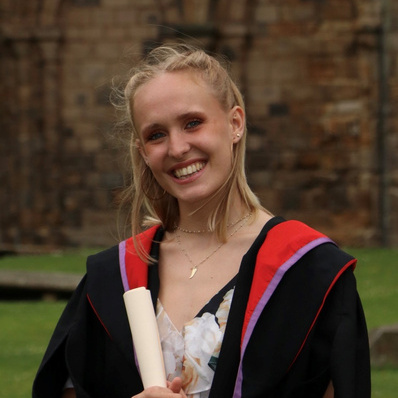
Winner | North East
Emilia Russell

2nd place | South East
Philipp Schulz
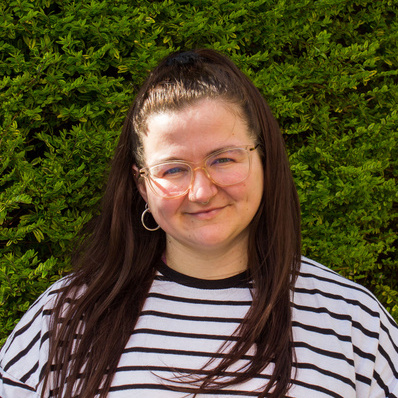
3rd place | Midlands
Hannah Hilton-Tapp
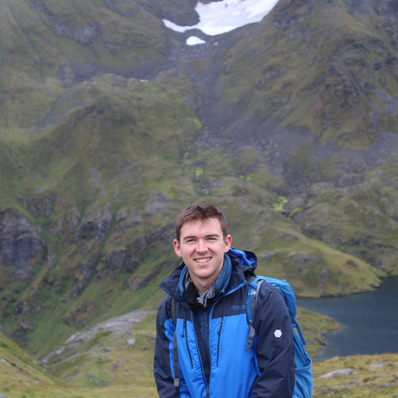
Scotland
Nick Mappin

North West & North Wales
Rajinth Shanthar
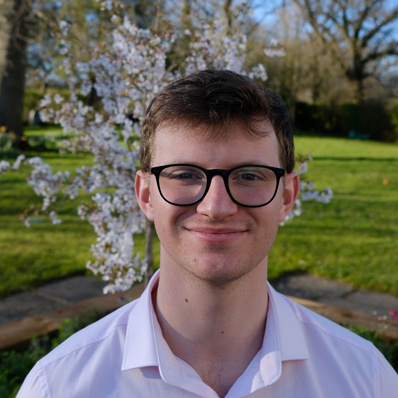
South West & South Wales
Tom Jessel

Winner | North East
Emilia Russell
Emilia Russell is a 2nd year PhD student in the Department of Engineering at Durham University, currently investigating the impacts of mechanical strain on the electrical properties of 2-dimensional semiconductors. In her free time, she enjoys sailing and organising seminars from industry speakers with the Women’s Engineering Society at Durham.
Why strained semiconductors are like crinkle-cut crisps
When applying strain to 2-dimensional transition metal dichalcogenides, it has been observed that the bandgap changes. The bandgap is the potential difference between the highest energy bounded (immobile) electrons and the delocalised (mobile) electrons.
Crinkle cut crisps taste better because they hold more salt, crinkle cut semiconductors insulate better because they hold more electrons.
This effect could be exploited in the next generation of synthetic skin. It could also be used to design flexible acetylene detectors to monitor food expiration, reducing food waste. To date, the relationship between mechanical strain and electronic properties has predominantly been shown through computational modelling. This research focuses on overcoming the issues that have hindered the realisation of these devices, such that the effects of strain on other semiconductor properties can be investigated. In turn, this will lead to a better understanding of the electrostatics and charge transport of these novel 2-D materials.

2nd place | South East
Philipp Schulz
Philipp is a second-year PhD student at University College London (UCL) investigating the environmental degradation that nickel-base superalloys may face in hydrogen combustion jet engine environments. At UCL, he is also a postgraduate research student representative, as well as committee member of the Mechanical Engineering Researchers’ Society.
In his free time, he enjoys road cycling and reading.
Hydrogen-related degradation of nickel-base superalloys exposed to hydrogen combustion environments
Hydrogen-powered combustion systems are seen as a highly feasible option to decarbonise aviation, by and beyond 2050. It is therefore critical to understand if H-induced degradation, such as hydrogen embrittlement, could happen in high-temperature alloys used inside the combustion chamber. While H embrittlement is well documented in literature for near room-temperature applications, it is not clear how H interacts with high-temperature materials during H combustion.
This presentation aims to give a comprehensive overview of the challenges imposed on nickel-base superalloys by hydrogen environments. Additionally, the differences between past literature data regarding hydrogen-related degradation of Ni-base superalloys and their future application in hydrogen combustion environments will be highlighted. Lastly, insights will be given into current and future experimental studies to tackle these challenges and facilitate the introduction of carbon-free aviation.

3rd place | Midlands
Hannah Hilton-Tapp
Hannah is a third-year PhD student at the University of Leicester, working in the Centre for Sustainable Materials Processing and Space Park Leicester, under the supervision of Dr Ramy Mesalam. Her research interests include surface finishing of materials, electrodeposition of nanocomposites and the production of thermoelectric devices for use in Radioisotope Thermoelectric Generators (RTGs). She also sits on the Advisory Council for IOM3 as a postgraduate student representative.
Production of copper nanocomposite coatings via a novel pulse-reverse plating technique
The development of the process to produce Metal Matrix Nanocomposite (MMNC) coatings provides opportunity for the enhancement of material properties. As the demand of materials increase, the properties of these materials must progress with them. Equally, if the properties of materials improve, technology can progress quicker. Copper is of particular importance in industry due to its high thermal and electrical conductivity at room temperature, however it is a relatively soft, malleable, and prone to oxidation metal.
Incorporating nanoparticles into the copper matrix can improve the properties of the coatings, without significantly diminishing others. The utilisation of Pulse Reverse Plating (PRP) in the production of MMNCs has been explored over the years but this work looks to utilise the anodic pulse and anionic surfactant to increase particle content. Resulting composition and properties were determined and characterised.

Scotland
Nick Mappin
Nick is a fifth-year Integrated Master’s student at the University of St Andrews, with a particular focus on igneous petrology and ore geology. His research investigates a nepheline syenite deposit in the north of Norway, which is mined for nepheline and feldspar, for use in glass and ceramics. He is establishing what the controlling factors are on the ore quality and how and why the ore spatially varies throughout the deposit.
Fluid interaction in nepheline syenite, Stjernøya, Norway, and the implication for ore quality
The Nabarren nepheline syenite deposit is an intrusive body in the south of the Lillebukt Alkaline Complex, Norway. It comprises two predominant, syenite types, subdivided based on the accessory mafic mineralogy: biotite- and pyroxene-nepheline syenite. Sibelco operates an open pit and underground mine, exploiting nepheline and feldspar, for use in glass, ceramics, and paint fillers. Past studies conclude that biotite-bearing nepheline syenite has a reduced ore quality, however, the cause of the degradation is unknown. Contaminated carbonatite dykes are heterogeneously distributed throughout the deposit. Field evidence, cathodoluminescence, and petrography reveal a strong mineralogical alteration and ore quality reduction surrounding the dykes. Metasomatism or magmatic interaction between carbonatite and syenite is interpreted to cause this change. This presentation explores the processes liable for the ore quality variation and how ore beneficiation and mine operations can be enhanced.

North West & North Wales
Rajinth Shanthar
Rajinth is a second-year PhD student from the Department of Materials, The University of Manchester, under the supervision of Dr Chamil Abeykoon, Dr Robert Prosser and Prof Prasad Potluri. His research is focused on simulating the flow of a liquid through a multiscale porous media, specifically the flow of polymeric resins across carbon and glass fibre fabrics.
He is trying to introduce the complex relationships observed in the physical world between the resin flow and parameters such as resin pressure, flow rate, temperature, and fabric properties into the numerical domain. Rajinth’s research spans a broad range of topics such as Computational Fluid Dynamics (CFD), polymer rheology, composite manufacturing, and process optimisation.
Optimised composite manufacturing using Resin Transfer Moulding
Composite materials have become a staple in modern engineering. For example, Fibre Reinforced Plastics (FRP) are widely used in industries such as aerospace and automotive thanks to their high strength-to-weight ratio. The reinforcement can be synthetic fibres such as carbon and glass, whereas the matrix is typically a thermosetting plastic. Resin Transfer Moulding (RTM) is a method of fabricating FRP parts, capable of achieving an excellent surface finish and high rates of production.
Here, the reinforcement fabric is placed within a rigid mould, injected with the liquid matrix material and finally heat cured. To optimise the RTM process and to ensure that the parts produced have high quality and minimum defects, Computational Fluid Dynamic (CFD) flow simulations can be used as a cost-effective approach. However, these CFD models need to sufficiently capture all the flow complexities associated with the RTM process to yield accurate and useful results.

South West & South Wales
Tom Jessel
Tom graduated from Cardiff University in 2021 with a First Class Honours degree in Mechanical Engineering. Currently he is a third-year PhD student at Cardiff University, working in conjunction with Renishaw plc.
His research focuses on tool condition monitoring and evaluation of diamond-coated tools, with the aim of replacing tools when necessary and not at periodic intervals. The research project has a focus on the utilisation of acoustic emission (AE) and applications of advanced signal processing techniques to determine remaining tool life, thereby reducing waste and the costs associated with discarding tools prematurely.
Outside of research, Tom enjoys climbing on the sea-cliffs or quarries of South Wales.
The potential of unsupervised Machine Learning techniques for Tool Condition Monitoring of Diamond-Coated Burrs
Within manufacturing there is a growing need for autonomous Tool Condition Monitoring (TCM) systems, with the ability to predict tool wear and failure. This need is increased, when using specialised tools such as Diamond-Coated Burrs (DCBs) for grinding high strength ceramics or glass, in which the random nature of the tool, inconsistent manufacturing methods and high wear rates create large variance in tool life. This unpredictable nature leads to a significant fraction of a DCB tool's life being underutilised due to premature replacement.
Acoustic Emission (AE) in conjunction with Machine Learning (ML) models present a possible, on-machine monitoring technique, which could be used as a prediction method for DCB wear. The unsupervised training of autoencoders, shows promise in predicting DCB wear based solely on components of detected AE, potentially allowing for the continuous monitoring of individual tools.
 2023 final - 3 May | The Armourers' Hall, London
2023 final - 3 May | The Armourers' Hall, London
2023 final - 3 May | The Armourers' Hall, London
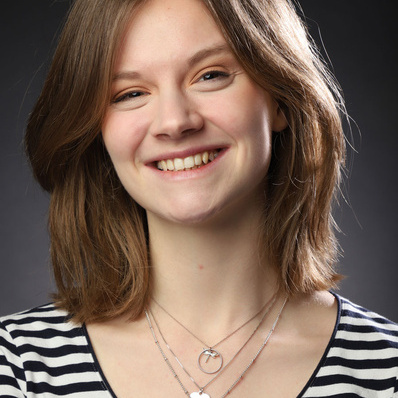
Winner - South East
Georgina Burgoyne Morris
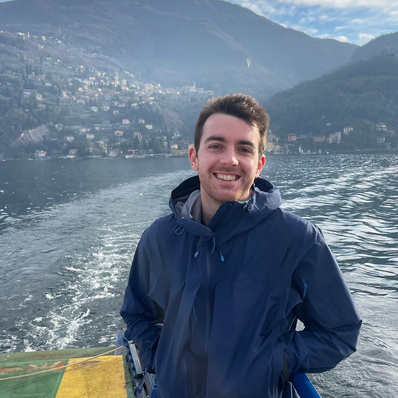
2nd place - Midlands
Toby Reid
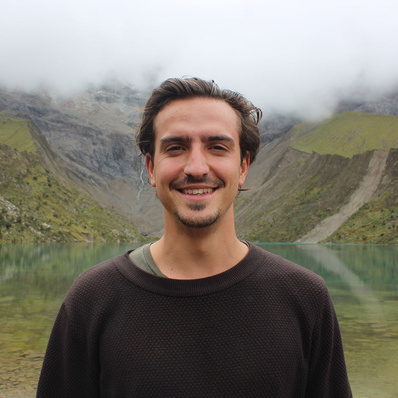
3rd place - South West & South Wales
Phil Smith
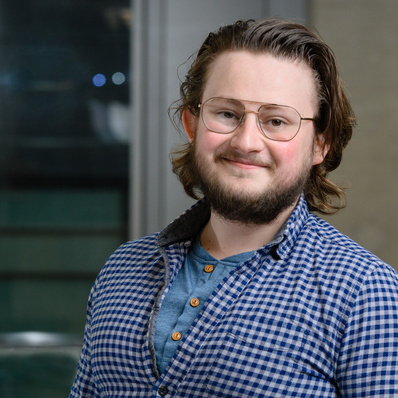
North West & North Wales
Thomas Hughes
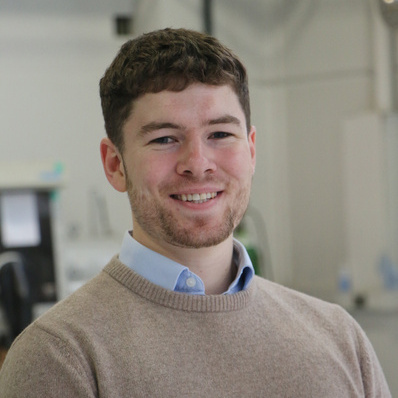
North East
Henry Saunders
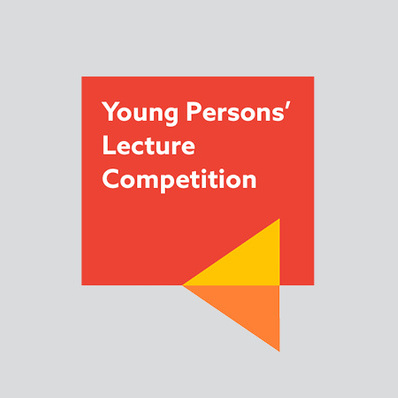
Scotland
Gillean Brook

Winner - South East
Georgina Burgoyne Morris
Georgie is a first year PhD student at the Department of Materials Science & Metallurgy at the University of Cambridge, where she stayed having completed her undergraduate degree in Natural Sciences, specialising in Materials Science. Her research, within the Photoactive Materials group, surrounds the development of self-healing polymeric hosts for triplet-triplet annihilation upconversion – a process by which the efficiency of solar cells could be boosted through the ability to usefully harvest sub-bandgap photons.
When she’s not in the lab, Georgie enjoys cooking, playing music, and going to pub quizzes.
Stimuli-responsive polymers as self-healing materials
The ability to autonomously repair damage can lead to significant improvements in lifetime and recyclability of polymeric materials, reducing both waste and production costs. This may be achieved either extrinsically, through the release of healing agents encapsulated in the polymer matrix, or intrinsically, as a result of dynamic interactions between the polymer chains themselves. The latter systems have the advantage that their healing ability is not reliant upon the presence of a secondary reactive species, giving potential to repair more extensive or repeated damage.
This talk will discuss how, through tuning their chemistry, polymers can be made to intrinsically self-heal under ambient conditions, or in response to external stimuli such as heat or light. It will also explore the variety of applications for these materials, from healable protective coatings to recyclable thermoset resins.

2nd place - Midlands
Toby Reid
Toby is a Non-Metallic Materials Engineer at Rolls-Royce Aerospace, specialising in elastomeric, sealing, and composite materials where he focuses on operational support for the delivery of Roll-Royce Civil engines as well as research and development into future sealing solutions for the next generation of Aerospace technologies.
Prior to this he spent 5 years at Loughborough University where he did a Master’s degree in Materials Engineering with specialisation and research into novel elastomer nanomaterial composites. While at university, he spent a year in industry researching and prototyping new materials for Parker Meggitt Aerospace where he developed a novel patent pending elastomer composite material with unique fireproof properties.
Outside of work Toby enjoys multiple sporting activities including rowing, cycling, sailing, and running alongside hobbies like woodworking and photography.
Row row row your boat: A look at the history and materials used in high performance rowing boats
Rowing has come a long way, as one of the oldest sports in the world starting as far back as 3000BC, to London water taxis racing along the Thames in the 1900s through to the elite level of the modern Olympic games. Rowing has seen some of the most dramatic changes in materials composition, development, testing and modelling as any sport or industry in modern times.
From master carpenters constructing long ships through to the first composite boats made from papier-mâché in 1870 and beyond into the high-performance aerospace grade composites and metals used in modern racing shells today. In a sport where medals are won and lost my millimetres, materials have played a crucial role as athletes and manufactures look to maximise all aspects of performance.
This presentation will look at the past, present and future of materials, the development of new manufacturing methods and how materials can make a boat the length of a bus carrying over 1 tonne of rowers weigh less than 100kg.

3rd place - South West & South Wales
Phil Smith
Phil is a third year PhD student studying Physics and Materials Science at the University of Bristol. He completed his undergraduate chemistry degree at the University of Plymouth, where he worked on biofuels as a solution to reducing greenhouse gas emissions. Phil moved to Bristol to pursue his interests in reaching Net Zero by researching nuclear fuels and how they may be improved. During his studies, Phil has been thoroughly involved in his community, holding many representative positions and highlighting financial challenges faced by PGRs through independent research. He has been able to improve the understanding of peers, academics and executives, through a series of conversations and talks.
Outside of research, Phil enjoys football, surfing and music. Regularly playing live music to audiences throughout the City of Bristol.
Improving Advanced Nuclear Fuel
Improving advanced technology fuels (ATF) can be an important step to achieving a cost-effective, long-term future of carbon free energy. Uranium mononitride, offers improvements in thermal conductivity and fissile density when compared with UO2 fuel, but has been shown to degrade faster in air and water.
Previous research with thin film samples at the University of Bristol, found that UN is more resistant to corrosion by hydrogen peroxide, which simulates radiolytic conditions of a fission reactor, and this presented work considers how a metal dopant may prolong corrosion further. However, it was found when analysed by X-ray Diffraction (XRD) that the addition of niobium, as a dopant into the solid solution of UN, caused a faster shrinking of the crystal lattice than expected.
This talk will cover the synthesis of niobium doped UN and discuss the possible reasons for reduced lattice parameters, and the ways to explore the hypotheses.

North West & North Wales
Thomas Hughes
Thomas is currently a PhD student at Manchester University on the AMS CDT working on in situ testing for fusion materials. He's working with the UKAEA and STEP to design and use a test rig to simulate fusion environments and look at synergistic effects of radiation damage, tensile testing, heat loads, irradiation creep etc. He likes trying to make problems as simple as possible, as trying to explain what he does to anyone is like speaking gibberish!
His presentation will try break down the problems fusion materials scientists face and how to deal with them, hopefully you'll find it as interesting as he does.
Materials Design for Nuclear Fusion
Nuclear fusion contains one of the most hostile environments for any material to face – high heat, load, and irradiation in an electromagnetic condition. The choice of materials to withstand such an environment is a key discussion, and perhaps the main hurdle to overcome if fusion is to progress. This short lecture will focus on the material challenges faced, design choices to overcome these challenges with an aim to provide a background on first wall design for Tokamak style reactors.
Work will focus on key components like divertor design in ITER and similar reactors. This will be supplemented with the PhD work of simulating this environment outside of a reactor with in-situ testing for synergistic effects.

North East
Henry Saunders
Henry is a first year PhD student researching into metal additive manufacturing (AM) at the University of Sheffield’s Henry Royce Institute. First drawn to the field of AM during his Master’s research project, utilising the technology to manufacture a rocket engine in a bid to be the first student team in the UK to build and test a liquid rocket engine.
During the project, I encountered a problem, the defect concentration in my additively manufactured parts was varying based on the geometry of the part I was building. Coincidently two of the postdocs in my research group were working on a solution for the problem that I had encountered. Recognising the commercial potential of this solution I turned down the job offer I had with an AM start up and set about following my ambitions to build my own.
Outside of his research and entrepreneurial activities, Henry enjoys running and climbing, making the most of the nearby Peak District.
Programmable microstructures: Unleashing the potential of engineering alloys with metal additive manufacturing
As we strive towards achieving our net zero targets, optimising the utilisation of engineering materials is crucial. By having control over the grain structure of metals, we can enhance the performance of parts in service, leading to lighter components for the electric aircraft of the future, as well as maximising the efficient use of non-renewable metal resources. The grain structure of a metal forms the basis for its mechanical properties, making it an integral aspect in the design and production of metal components.
Additive manufacturing, also known as 3D printing, is a process of making three-dimensional solid objects from a digital model by adding material layer by layer. By varying the parameters of our heat source, we can change the thermal cycle experienced by the material and ‘programme’ different grain structures into different locations.

Scotland
Gillean Brook
Data Mining: How Machine Learning is Shaping Geology
In this lecture I will explore how machine learning already has, and will continue to, change the field with case studies from the worlds of mining, hydrothermal, and research geology. I will attempt to demystify and explain the core concepts of machine learning and inspire fellow geologists in the audience to consider the applications of this exiting technology to their own projects.
*Gillean did not compete in the 2022 UK final.
 2022 YPLC final - 4 May | The Armourers' Hall, London
2022 YPLC final - 4 May | The Armourers' Hall, London
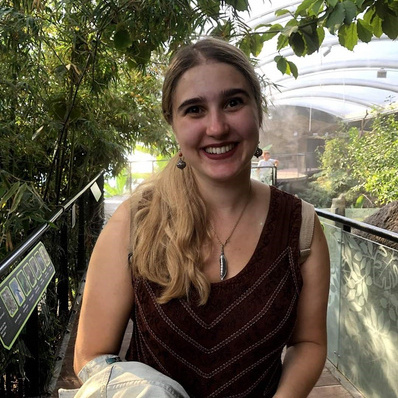
Winner - North East
Lauren Eggleton
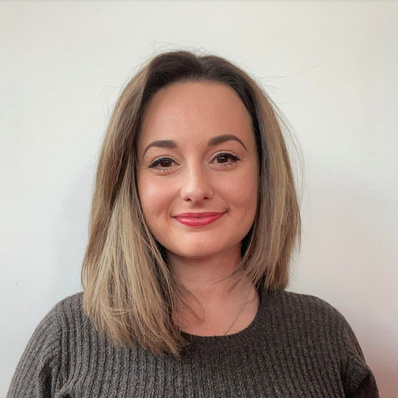
2nd place - Midlands
Anna Tholen
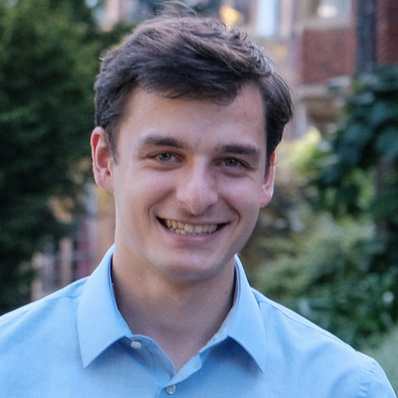
3rd place - South East
Ivan Grega
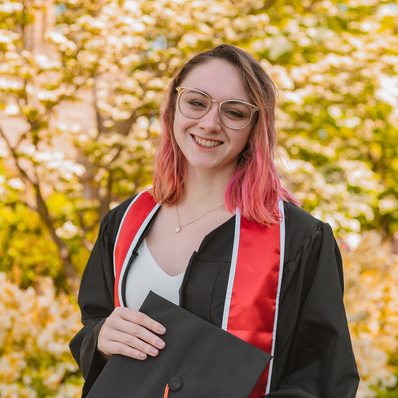
North West & North Wales
Katherine Nelms

South West & South Wales
Angus Siberry
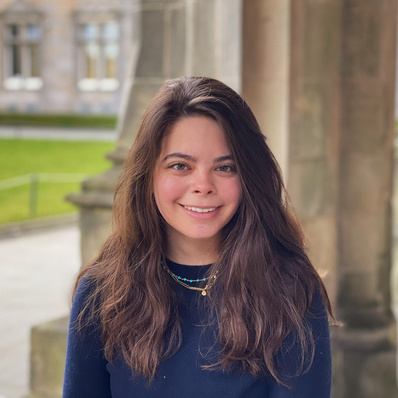
Scotland
Grace Nielson

Winner - North East
Lauren Eggleton
Lauren is a second year PhD student in the Materials Science and Engineering Department at The University of Sheffield. She developed a passion for research during her Masters in Materials Science and Engineering, which specialised in biomaterials. During this time, she undertook a year in industry at Philips Research UK, working in oral healthcare on whitening and hypersensitivity. Upon returning, she channelled her love for research and nature into her master’s project on snail and slug locomotion in the Natural Materials Group, and has never looked back. Her EPSRC funded PhD focuses on understanding and bridging the gap between structure and function in snail and slug mucus.
Within the department and faculty, she is an active member of the postgraduate research community: supporting fellow students as part of the postgraduate research committee, helping teach undergraduates, and sharing research stories over arts and crafts lunches. Outside of the lab, she is a keen communicator and advocate for inclusion and diversity in STEM subjects, volunteering for outreach programmes and school events at both the local and national level. Through her work with the Bioladies Network and Natural Materials Association, she hopes to inspire people across all ages and backgrounds to discover the scientific wonders found in nature.
In her free time, Lauren enjoys exploring the Peak District, medieval re-enactment and has recently taken up ice skating. Though she can often be found at home curled up with a good book and her two cats.
A sticky situation: The contradictory material properties of snail mucus
Nature has evolved a vast range of 'smart' materials and is currently an untapped resource for novel biomedical and engineering applications. A surprising example is snail mucus. Embodying two contradictory properties, adhesion and lubrication, this material can switch seamlessly between them whenever the functional need arises. But how does it do this and can we replicate it?
In the search to understand these unusual flow properties, our creation of a snail locomotion translation device demonstrates how a more holistic approach to analysing natural materials can reveal more about their true nature. Discovering that like many industrial materials, snail mucus crystallises, but controlling this is via an elegant means of changing its salt concentration. Showing that we can find inspiration for tomorrow's advanced materials everywhere, even at the bottom of our garden.

2nd place - Midlands
Anna Tholen
Anna is a final year PhD student studying across the Materials School and the Wolfson School of Mechanical, Electrical and Manufacturing Engineering at Loughborough University. Her PhD, funded by the Engineering and Physical Sciences Research Council and Renishaw Plc, looks to improve the metallurgy of tool steel components when fabricated by laser additive manufacturing.
Prior to her PhD, Anna completed an undergraduate degree in Product Design Engineering at Loughborough University, which involved three years of study and a year in industry at Unilever, procuring injection moulds internationally. As part of her undergraduate degree she completed an individual research project investigating the use of laser surface patterning of bacterial cellulose for peripheral nerve recovery applications, which sparked her interest in laser processing and materials science, ultimately leading to her career in research. Alongside her PhD, Anna is passionate about promoting STEM subjects and proudly takes part in outreach activities within schools and universities to promote engineering to young people of all ages.
Outside of academia, Anna enjoys trail running in the Lake District, taking her dog Basil on long walks, and playing the flute and piccolo.
Effects of local thermal history on H13 tool steel components fabricated by laser powder bed fusion additive manufacturing
Hot work tool steels possess excellent wear resistance due to a microstructure of tempered martensite and hard carbides, making them suitable for manufacturing components that must withstand elevated temperatures for sustained periods of time. Laser powder bed fusion (LPBF) additive manufacturing (AM) is a promising fabrication process for hot work tool steels. The mitigation of subtractive processing means a component does not need to be machined in an annealed state and undergo post process hardening to achieve its characteristics for tooling applications.
However, a consequence of the rapid, cyclical heating and cooling during LPBF AM results in residual stress accumulation in the fabricated part, causing catastrophic defect formation. Hot work tool steel alloys are particularly sensitive due to the compromises in microstructural evolution. This research investigates local microstructural evolution in H13 components fabricated by LPBF AM and its links to localised mechanical properties and susceptibility to crack formation.

3rd place - South East
Ivan Grega
Ivan is a first year PhD at the Department of Engineering, University of Cambridge. He completed his undergraduate degree (2021) with a Master’s in Mechanical and Aerospace Engineering, receiving the Sir George Nelson Prize in Applied Mechanics and was awarded the Ashby PhD Scholarship to continue to study in Cambridge. His current research focuses on developing experimental approaches such as self-assembly as well as computational techniques such as deep learning to discover architected materials with unprecedented properties by optimising their topologies. His interest in this topic was ignited during his undergraduate research internship (SURF) at Professor Julia Greer’s lab at Caltech, where he learned that it is possible to make materials with the density of water but the strength and toughness of steel. This experience, together with the industrial perspective gained during his internship at Siemens, motivated his hunt for future technological possibilities of these materials such as reversible energy absorption and integrated functionality. This propelled him to work with Professor Vikram Deshpande on developing scalable self-assembly process for opal crystals which could form the basis of efficient fast-charging batteries.
As a core philosophy, Ivan believes in discussion and dissemination of ideas with colleagues and others. He supervises undergraduate courses in materials and solid mechanics. While not absorbed in research, he likes to tinker with electronics, model planes and fulfils his passion as an amateur glider pilot. He plays ice hockey for Cambridge Blues and enjoys swimming and cycling.
Scalable manufacture of inverse opal metamaterials
Reducing energy consumption is shifting the focus to renewables, and the key intermediary in this energy revolution are batteries. Batteries are reaching their limits in terms of current density. In order to keep increasing the power density, electrodes with high surface-to-volume ratio are needed. Metamaterials with a micro-scale architecture achieve this, and inverse opal metamaterials are prime candidates due to their manufacturing scalability. Here we investigate the mechanics of self-assembly process of dry spherical particles which will serve as a template for scalable inverse opal manufacture. We elucidate the factors which govern the assembly process including the crucial role of gravity. Based on these insights, we design seeding templates which enable the creation of stable close-packed single crystals as well as metastable non-close-packed geometries. These findings open up new possibilities not only for battery electrodes, but also for photonic and structural applications.

North West & North Wales
Katherine Nelms
Kat is a first year international PhD student studying materials science at the University of Manchester. She was awarded the President's Scholar award and studies under Professor Phil Withers. She completed her undergraduate degree in materials engineering at Cornell University with a minor in chemistry. Kat was drawn to materials because it is inherently interdisciplinary; she found her niche in polymer composites and greatly enjoys that composites research combines both mechanics and chemistry. During her undergraduate degree, Kat interned for The Aerospace Corporation in El Segundo, CA working at their Space Materials Laboratory. She also researched under former NASA CTO Mason Pech at Cornell's Space Systems Design Studio. In both positions, Kat's work emphasized composite materials for spacecraft. Kat's passion for space exploration was invigorated by solving challenging problems imposed by the unique environment of space; she then stayed at Cornell for her Master's in Aerospace where she took courses in astrodynamics, control theory, and space systems design.
Outside of research, Kat plays water polo and lifts weights (often to the soundtrack of 80's and 2010's dance music). She also dabbles in odd sports such as pole dancing and trampoline. When not doing sports, she can be found collecting houseplants and bullet journaling. Though she misses the Los Angeles sunshine, Kat has loved travelling the UK during her weekends and deciphering different British accents.
Effect of fiber microstructure on kinking in unidirectional carbon fiber reinforced composites images in real time under axial compression
It is well known that fiber-reinforced polymer composites (FRPs) undergo micro buckling, then catastrophic failure by kinking when loaded under compression. The aim of this project is to use x-ray computed tomography (CT) to investigate kink band initiation and propagation. CT scans of FRPs confirmed that kinking is planar in nature and were used to visualize the damage modes in 3D for the first time. Another key study used in-situ synchrotron radiography at 10kHz to show that complete propagation occurs within 1.2 ms and revealed the previously debated initiation mechanism. Recent efforts focus on fiber movement during compression and confirm that misalignment contributes significantly to kink initiation but does not play a key role in propagation. Moving forward, ultrafast in-situ synchrotron radiography (20-40kHz) will be used to investigate the role fiber waviness on both FRP kink initiation and propagation.

South West & South Wales
Angus Siberry
Angus is a final year Ph.D. Computational Nuclear Physics student at the University of Bristol. While at Bristol he obtained an MSc in Nuclear Science and Engineering following a BSc in Physics. Angus has been working on nuclear-related research for more than 5 years, spanning magneto-hydrodynamic effects on the corrosion of fusion materials, advanced technology fuels, and for the past three years, he has focussed on the deterioration of spent nuclear fuel (SNF) in aqueous environments. In particular, modelling the radiation emitted from spent nuclear fuel to predict hydrogen gas release and hydrogen peroxide build-up in different waste environments.
He was recently awarded the Roy G. Post Scholarship for work dedicated to nuclear waste management, providing him the opportunity to fly out Phoenix, Arizona to present his work at the Waste Management Symposia 2022. His results are published in multiple highly regarded journals and his mathematical algorithms have been adopted by the National Nuclear Laboratory, UK. The success of his models inspired him to develop his work into an open-source web application, Rad-Dose. A fast easy-to-use tool for any work that requires modelling of radioactive doses received variety of surrounding media from radionuclide containing materials.
Radiation through matter: A geometrical understanding of energy deposition
A new mathematical radiation dosimetry model used to simulate principal geometries has been developed. Using recorded stopping data and either explicitly knowing the radionuclides present in a material or determining averages from a detector, this approach can simulate radiation through any material. This unique approach exposes symmetry in simple geometries to reduce complexity and computation load, which in turn allows for modern programming languages to be utilized and results linked to more computationally demanding models (Finite Element Analysis, Monte Carlo Simulators). The reduced complexity of these models does not suffer from increased inaccuracy to similar more complex simulators (MCNP, GEANT4) allowing one to develop and scale complex models, such as spent nuclear fuel dissolution, with relative ease.

Scotland
Grace Nielson
Grace is a fifth year MGeol student in the School of Earth and Environmental Science at the University of St Andrews. Her MGeol thesis is focused on the Torridonian Diabaig Formation and it’s implications for the origin of life on land. In Spring 2021 she undertook fieldwork on the Isle of Harris investigating the UHT terranes and rare metal pegmatites of the South Harris Complex, which was generously supported by IOM3 and MIS Trust. As a consequence of this project she began working closely with the Mining Institute of Scotland (MIS) to help engage students and graduates about the future of the mining industry. Working with MIS has fuelled her interest in the net zero transition and what that means for natural resources such as critical metals as well as rekindled her enthusiasm for exploration in the High North and Arctic geopolitics which she has loved reading about since she was a kid.
In her free time, Grace enjoys competitive showjumping, painting, and exploring the beautiful Fife Coast.
The future of the arctic: Mineral resources, geopolitics and climate change
The Arctic is commonly thought of as the final frontier when it comes to human exploration and exploitation of Earth’s natural resources. These resources include oil and natural gas, rare-earth metals, and other mineral resources. The vast majority of these deposits are within Arctic state boundaries, however melting sea ice is creating unprecedented access to international waters. The UN states that exploitation of any natural resource beyond the continental shelf of a nation is prohibited, but as more Arctic sea ice melts this is subject to change and major players in the west are making moves to claim these as well as resources on land. Climate change is at the core of access to Arctic resources and it is already effecting the region. This talk will focus on the natural and mineral resources in the Arctic, claims to these resources, and what effect extraction will have on the Arctic region and beyond.
 2021 YPLC final - 5 May | Online
2021 YPLC final - 5 May | Online
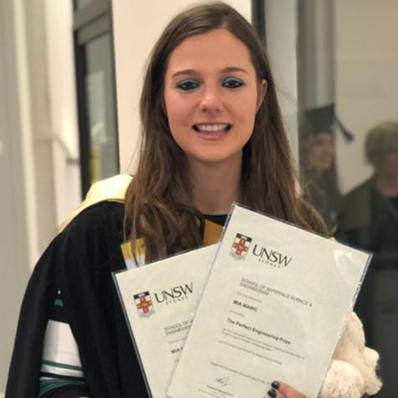
Winner - North West & North Wales
Mia Maric
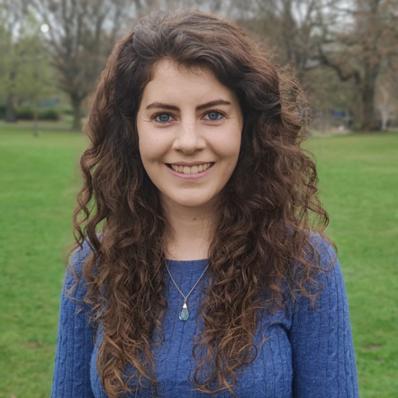
2nd place - North East
Frances Livera

3rd place - South West & South Wales
Alastair Houston

Scotland
Catriona Breasley
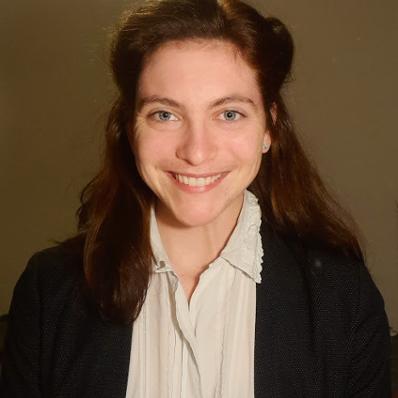
Midlands
Alex Dickinson-Lomas
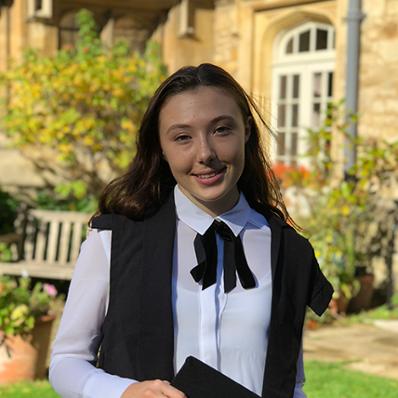
South East
Camilla Hurst

Winner - North West & North Wales
Mia Maric
Mia is a third year international PhD student studying Materials Science at the University of Manchester. She completed her undergraduate degree at the University of New South Wales in Sydney Australia, where she won the university medal for the top performing student in Materials Science and Engineering. Mia conducted an internship at the Australian Nuclear Science and Technology organisation, where her passion for nuclear materials and their useability within the nuclear power industry was developed. During her studies, she has been thoroughly involved in an array of outreach activities particularly focusing on equity, diversity and inclusion work. Earlier in 2021, Mia was selected to attend the global young scientist symposium where her passion for encouraging females within science and technology to pursue and excel in research related careers was enhanced.
Outside of research, Mia enjoys playing hockey, running and hiking. When not doing sports, she can be found volunteering at the local cat shelter and trying to bake the perfect chocolate chip cookie.
How do Hexagonal Materials Recrystallise?
Recrystallisation of Hexagonal alloys is extensively utilised within both industrial and research applications as a means of microstructural development and mechanical property refinement. However, the multifaceted nature of this process has meant that the mechanistic drivers for the microstructural as well as textural evolution that occurs during heating is not yet understood. Here, a range of experiments combined with computational modelling techniques have been able to highlight that the deformation imparted onto the alloy prior to recrystallisation strongly dictates its behaviour during heating.
In this study we have developed a model to correlate the deformed microstructure to the strong orientation dependent texture change that is seen in hexagonal alloys during recrystallisation. Therefore, an understanding of the relationship between deformation and recrystallisation is essential if heat assisted texture control is to be utilised as a cost-effective method for mechanical property enhancement of hexagonal alloys.

2nd place - North East
Frances Livera
Frances is a first year PhD student in Materials Science & Engineering at the University of Sheffield and part of the Advanced Metallic Systems Centre for Doctoral Training. She completed her MChem in Chemistry at the University of York in 2019, and took particular interest in Materials Science during her course. Frances completed her final undergraduate year in industry, working full time at Unilever whilst completing her Masters. The Steel City was calling though, and she began her PhD in 2019, sponsored by the Culham Centre for Fusion Energy. Her research aims to improve the complementarity between Additive Manufacturing and Brazing, under the supervision of Prof. Russell Goodall and Prof. Iain Todd. She is involved in undergraduate teaching, will be hosting a Nuffield Research Placement and takes pride in being a STEM Ambassador, helping to inspire the next generation to pursue careers in STEM.
Aside from academic study, Frances can be found exploring and climbing in the Peak District, playing hockey, or baking up a storm. She has had an international upbringing spanning three continents, and enjoys experiencing different cultures and new places.
Improving the Complementarity between Additive Manufacture and Brazing
Additive Manufacture (AM) and brazing have seen significant research interest individually, but their combination has not been widely investigated. AM is a layer-upon-layer building technique that can produce complex, three-dimensional parts in shorter time frames than traditional manufacturing, but is limited by build size for metal part production. Brazing uses a molten filler metal to create a joint between two materials. Combining the geometrical freedom of AM with brazing could produce complex part geometries and reduce lead-times. The disparity between the surface finish of AM and the smoother roughness requirements for a brazed joint is the main challenge in combining the techniques. An AM surface may be tailored by implementing a topographical structure, to aid braze alloy wettability and control flow direction. The applications of this research are considerable due to the freedom of AM and its increasing popularity as a manufacturing technique in aerospace, medicine and the nuclear industry.

3rd place - South West & South Wales
Alastair Houston
Alastair is currently working for Minton Treharne and Davies as a Consultant Materials Scientist, where his role is to perform investigations involving materials identification, mechanical testing, and failure analysis for the marine, cargo, and construction industries.
He studied Natural Sciences at the University of Cambridge, specialising in materials science, during which time he researched laser welding, protective coatings and compositional variations in jet engine turbine blades, and the production of new materials used for low-level nuclear waste storage. He continued his passion for materials science by completing a PhD in the Composites and Coatings Group, University of Cambridge, where his research focussed on the development of novel diesel particulate filters containing fine ceramic fibres. During his PhD, Alastair was heavily involved in the teaching of undergraduate students and spreading the joy of materials science through various outreach events.
In his spare time, Alastair enjoys spending time in the great outdoors, and can often be found hillwalking or cycling, as well as honing his juggling skills.
Finding Success in Failure
Why did it fail? When did it happen? Who is responsible? — Commonly asked questions in the field of materials failure investigations. Materials will degrade from the moment they are put into service, for example through wear of moving components, corrosion in a harsh environment, or fatigue cracking through repeated motions. Recognising this, materials intended for critical applications are carefully selected to withstand their particular service environment. However, sometimes their expected lifetime can be cut short by an unexpected and catastrophic failure, often with a large price tag for damages and litigation.
Once the dust settles following such an incident, it becomes necessary to answer the above questions. Through forensic study of failed materials, an investigator must piece together the evidence to find the nature of the failure. This presentation outlines the process of materials failure investigation with recent case studies on corrosion, fatigue and overload.

Scotland
Catriona Breasley
Catriona is a fifth year MGeol student in the School of Earth and Environmental Science at the University of St Andrews. She is currently researching the formation of hydrothermal manganese deposits at mid ocean ridge spreading centres under the supervision of Dr Eva Stueken and Dr Michael Byrne for her MGeol thesis.
She undertook an exploration geology internship at Cornish Lithium Ltd. in the summer of 2019 which inspired her to continue into further study looking at lithium deposits. This year, Catriona will start a PhD under the supervision of Dr Lee Groat at the University of British Columbia looking at lithium rich pegmatites.
Outside of academia she is an avid hiker, tennis player and loves to collect plant fossils along the beautiful Fife Coastal Path.
Deep-Sea Hydrothermal Manganese Deposition beneath the Arctic Ice Sheet
Deep-sea hydrothermal manganese deposits are known to be significant sources of rare earth elements and other critical metals. Found in a variety of settings, these nodules, crusts and enriched sediments have the potential to be economic sources of metal exploration and extraction.
Gakkel Ridge represents one of the least studied hydrothermal ridge systems in the world. Located beneath the Arctic Ice sheet, exploration and sample analysis is logistically difficult and expensive. Using Ocean Parcels software, a manganese decay and deposition kernel is implemented and sensitivity tested to show areas of enrichment around well studied vent sites across the world. This model is implemented onto Gakkel Ridge where areas of enrichment are located, and likely deposit formations are hypothesised. This talk ultimately aims to explain factors influencing manganese deposit formation, assess the use of advection-based modelling to predict manganese deposit formation and finally discuss these implications for deep sea mining.

Midlands
Alex Dickinson-Lomas
Alex is a PhD student in the School of Metallurgy & Materials at the University of Birmingham. She completed a BSc in Nuclear Science & Materials in 2018 and an MSc in Nuclear Decommissioning & Waste Management in 2019. After an MSc project based in the Cavendish Nuclear radiometric physics team, Alex stayed in the beautiful West Cumbria and started a role as a mechanical engineer for Arup in 2019. This gave brilliant insight into the decommissioning and engineering challenges faced by the aging nuclear sites in the UK and reignited an enthusiasm for understanding materials in a nuclear context. With a hankering for some more fundamental science Alex started a PhD project looking at radiation damage in nuclear materials under the supervision of Dr Yu-Lung Chiu and Professor Martin Freer in August 2020.
Outside of materials science she can often be found clinging to the sides of mountains, swimming in lakes or embarking on sewing projects.
Using Complementary Characterisation Techniques to Understand Radiation Damage in Nuclear Reactor Pressure Vessels
Extending the lifetime of nuclear reactors to improve sustainability is essential for the global future of energy generation. The critical component, the reactor pressure vessel (RPV), is subjected to extreme radiation conditions for over 50 years and must maintain structural integrity to ensure safe and secure reactor operation. Understanding the mechanisms and changes in microstructure and mechanical properties of RPV steels will enable more accurate prediction of lifelong performance. Combining a wide range of complementary characterisation techniques holds the key to understanding how these materials change in harsh environments and how we can create better predictive models for their behaviour.
This talk will briefly explain how combining techniques such as mechanical testing, transmission electron microscopy, atom probe tomography and small angle neutron scattering, is not only useful but necessary to underpin predictions and understand material behaviour.

South East
Camilla Hurst
Camilla is a 3rd year undergraduate reading Materials Science at Corpus Christi College, University of Oxford. Her interest in materials science has stemmed from extracurricular research projects she carried out in high school. These projects have won her prizes internationally, including at the EU Contest for Young Scientist (EUCYS) and the Intel International Science & Engineering Fair (Intel ISEF). She has also been selected to participate in various scientific programs, namely the London International Youth Science Forum and the Weizmann Institute of Science International Summer Science Institute in Israel.
Outside of materials science, Camilla enjoys broadening her knowledge in areas from climate change to female representation in science. She believes in promoting science to the youth, and so has repeatedly volunteered at national young scientist contests. Camilla otherwise likes to spend her time running and painting.
The role of materials and surfaces in the transmission of bacteria
Covid-19 has highlighted the issue of viral transmission not only by particulates, but also via fomite surfaces. This will continue to be a critical issue if we are to prevent other pandemics and problems from antimicrobial resistance. We will see that materials can have an important role in solving this issue.
In my presentation I will discuss which surfaces are problematic in public places by drawing on evidence from a school study. This study shows the types of bacteria that are present as well as the different bacteria survival rates on a variety of materials. Interestingly, the bacterial death rate is highest on some natural woods. This is due to the chemicals involved in the natural defence mechanism of trees. Therefore, we should promote this sustainable material for use on fomite surfaces as much as possible.
 2020 YPLC final - 23 September | Online
2020 YPLC final - 23 September | Online
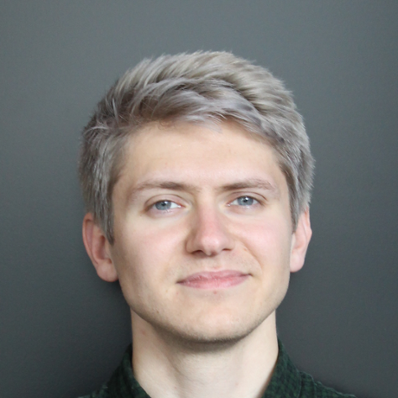
Winner - Midlands
Morgan Lowther
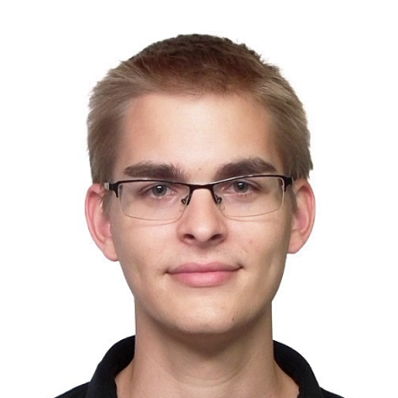
2nd Place - North West & North Wales
Tamás Zagyva
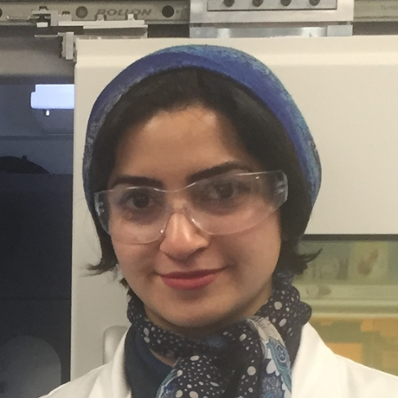
3rd Place - Scotland
Shima Ghanaatian
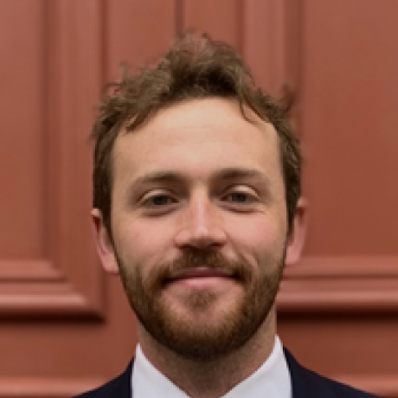
South West & South Wales
Freddie Russell-Pavier
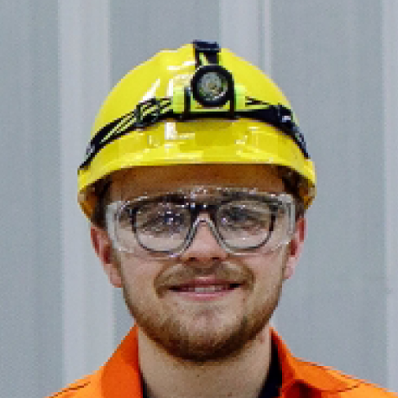
Alex Starling
North East
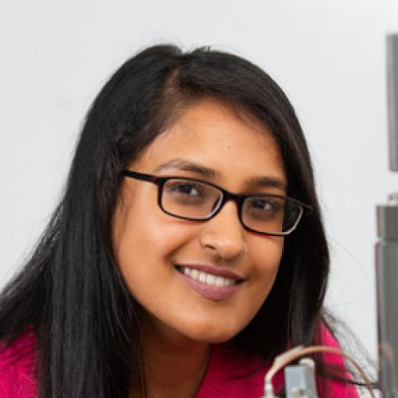
Parsons Conference
Minal Patel
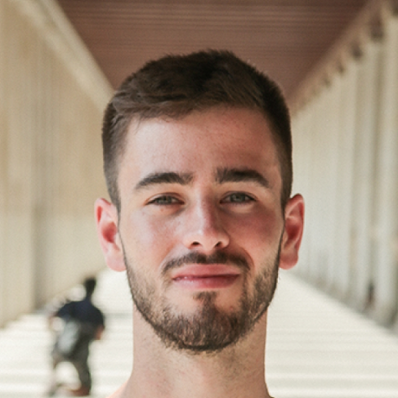
South East
Jack Aspinall

Winner - Midlands
Morgan Lowther
Having studied for an MSci in Natural Sciences at the University of Cambridge, UK, Morgan returned to his Midlands roots to work at the Manufacturing Technology Centre in 2016. As part of the National Centre for Additive Manufacturing, he spent time characterising the feedstocks used for metal powder bed printers. This led to a fascination with how powder, printing parameters and post-processing alter the behaviour of additively manufactured materials.
Now a final year PhD student at the University of Birmingham, UK, Morgan's research uses 3D printing to deliver antimicrobials from biomedical implants, hoping to tackle the increasing challenge of implant-associated infections. Engaging with science outreach since his undergraduate days, a highlight has been helping students become human 3D printers. In his spare time, Morgan is a (very) amateur baker, climber and badminton player
Head, shoulders, knees and microbes: 3D printing better implants
Over 100,000 joint replacement surgeries take place each year in the UK alone, accounting for 1 in 10 hospital admissions. But the prevalence of metallic implants belies that the human body is among the most challenging environments for materials design. Implants often fail not through mechanical means, but biologically, by failing to integrate with native tissues and being colonised by microbes. With the increasing prevalence of antimicrobial resistance predicted to kill more people than cancer by 2050, making previously simple surgeries life threatening, preventing implant-associated infection is a necessity.
Conventional approaches have relied on coatings and other secondary processing to modify implants after manufacture. However, in the past decade, advances in metal additive manufacturing (AM) have opened the possibility of radically new approaches to implant design and materials. How might AM simultaneously revolutionise the production of implants and help mitigate the threat of antimicrobial resistance?
This is the last line of the biog text.

2nd Place - North West & North Wales
Tamás Zagyva
Tamás graduated from Eötvös Loránd University, Hungary, with a BSc in Earth Science in 2016 and with an MSc in Materials Science in 2019. His undergraduate research was related to mineralogy and crystallography. During his Master’s studies, he was involved in a research project focusing on bioceramic coatings. Tamás has attended several conferences presenting his undergraduate and Master's research with great success, winning awards in both best poster and best presentation categories. He is the first author of one, and co-author of two, peer-reviewed articles. He started his PhD at The University of Manchester, Dalton Nuclear Institute, UK, in 2019. His PhD topic focuses on the radiation effects on glass-ceramic nuclear waste forms. This research gives an opportunity to continue his committed career path combining geology and materials science.
In his spare time, Tamás enjoys participating on gem and mineral shows, as well as collecting minerals. He is keen on motorsports and enjoys playing board games.
Hip implant materials: novel bioactive coatings for silicon nitride ceramic hip replacements
Total hip replacements are one of the most challenging implants because they need to be created from materials with extremely good mechanical and biological properties. Metals and alloys have been widely used for decades due to their excellent mechanical strength and corrosion resistance. However, the high-wear rate and the toxicity of the chemical components urged the development of non-metallic implant materials like polymers and ceramics. Silicon nitride has recently been introduced as a commercially available bioceramic for total hip replacements with outstanding mechanical properties.
This lecture gives an introduction about the development of total hip replacement materials and presents research about novel bioactive coatings on silicon nitride ceramics, which could speed up the healing process after surgery. An alternative, simple, coating deposition technique has been developed especially for silicon nitride hip implants, where eggshell is the raw material of the coatings.

3rd Place - Scotland
Shima Ghanaatian
Shima graduated from the Petroleum University of Technology (PUT) in Iran with a 1st Class Bachelors in Chemical Engineering in 2013. In 2015, she joined Hydrafact Ltd in Edinburgh, UK, where she was mainly involved with corrosion studies in the oil and gas industry. Continuing her passion for addressing global warming challenges and following her win of the prestigious James-Watt Scholarship, she undertook a PhD in Chemical Engineering under the supervision of UK industrial decarbonisation champion, Professor Mercedes Maroto-Valer, at the Research Centre for Carbon Solutions (RCCS). Here, she currently focuses on carbon storage in geological formations. She is heavily involved in the MILEPOST project, where her research study unravelled the CO2 reactive flow drivers at multi-scale (pore to core) during the CO2 sequestration process.
Shima has published numerous peer-reviewed Journal articles and conference papers, and her innovative study of CO2 geological storage monitoring is internationally recognised and has achieved commendation through multiple prizes/awards. She has been awarded the EPSRC Travel Grant, the EXPO&more Workshop Grant and Best PhD Student Presenter Award, the latest at the School of Engineering and Physical Sciences at Heriot-Watt University, UK. Her research studies have been presented at a number of international conferences, most recently the Trondheim CO2 Capture and Storage (TCCS) Conference in Norway in June 2019.
Outside of her project, Shima really enjoys teaching and lab demonstrating for chemical engineering undergraduate students. She wishes to integrate her love for the outdoors with clean atmosphere and sustainable development in her future profession.
Can we securely store CO2 in geological formations to address the global warming challenge
The injection of CO2 in geological formations, e.g. sandstone and carbonate formations, disrupts the equilibrium among the resident phases and causes geochemical changes. Determining safe storage of CO2 in aquifers significantly depends on understanding how fluid phases interact with the porous structure of rocks. Therefore, we investigated the reactivity of CO2-saturated brine with different ionic strengths in contact with sandstone at pressure and temperature conditions representative of storage sites. In this work, we employed a systematic combination of different techniques, including hydrothermal tests, ICP-OES, X-ray diffractometer, Environmental Scanning Electron Microscopy-Energy Dispersive X-ray Spectroscopy (ESEM-EDS), Micro-Computed Tomography (micro-CT) scanning to address the extremely intricate phenomena of flow, transport and reactions occurring over various temporal and spatial scales in sandstone reservoir rocks. The information gained from this study will allow us to build a better understanding of the dominant drivers of CO2 reactive transport in porous media during CO2 storage.

South West & South Wales
Freddie Russell-Pavier
Freddie recently passed his PhD viva and is awaiting graduation from the University of Bristol, UK. In partnership with the National Physical Laboratory, Freddie’s PhD focused on translating the commonly found electro-mechanical components in DVD players and applying them as sensors for high-speed nanoscale imaging within material analysis. Working closely with Dr Oliver Payton and Dr Loren Picco at the University of Bristol, along with collaborators at the National Physical Laboratory, Virginia Commonwealth University (USA) and University College London (UK), Freddie has demonstrated the surprising performant capabilities of the low-cost DVD technology. As a consequence of integrating DVD reading sensors into the technique of high-speed atomic force microscopy, a series of new measurement tools have been created. He has worked on a diverse range of challenges from helping to perfect a novel 2D material manufacturing process, to developing a next generation genome sequencing diagnostic tool that has just completed medical trials for leukemia and breast cancer in the USA.
Nano- to millimetre-scale material characterisation with DVD player components
The digital versatile disc (DVD) player technology, which we might typically use at home to watch movies or transfer files in our workplaces, has been developed into a component capable of nanoscale sensing. DVD player detection systems operate at very high bandwidths and allow for unprecedented sensing speeds when applied to the emerging field of video-rate atomic force microscopy (AFM). This new type of microscope is able to collect topography maps thousands of times faster than conventional AFM, allowing nanoscale processes to be observed in real time under ambient or liquid environments.
The focus detection system in a DVD player read head (also known as an optical pickup unit) is central within a novel video-rate AFM that is able to map out individual strands of labelled DNA molecules in 3D that are less than 1,000,000,000th of a metre in size. Using this technology we are also able to map the locations of carbides, and other inclusions (approximately 2nm high) in thermally sensitised 306 stainless steel, akin to those materials found in nuclear reactor boiler components. Such data gives insight into the local changes in material properties that could lead to critical failure of high-value components in industry.

Alex Starling
North East
Alex graduated from the University of Leeds, UK, in 2018 with a first-class MEng/BEng in Chemical Engineering, specialising in Materials Sciences. Between his 3rd and 4th year of study, Alex gained an industrial placement at Guardian Industries UK, a commercial float glass producer. There, he was involved in developing XRF facilities for analysing and monitoring the quality of raw materials to help predict and maintain a stable glass chemistry. Following that, Alex was offered a project in partnership with Guardian Industries to look into the performance of commercially available self-cleaning glasses. The project involved understanding how the nanostructure of these thin coatings affect the overall performance and functionality of the products. Microscopy techniques such as SEM, TEM, EDX and XPS were used for his research. After completing his research, he was given a full-time role in the process engineering team at Guardian Industries and was awarded for his outstanding achievements by the University of Leeds.
Alex enjoys working with others to create long-lasting, innovative and sustainable solutions to problems. Outside of work, he enjoys mountain biking, DIY projects at home and walking his rescue husky Thor.
Self-cleaning glass, benchmarking and analysis
Self-cleaning glasses work by utilising a thin layer of photocatalytic material, commonly titanium dioxide, to break down organic matter into water-soluble components, which are then washed away by rain. Four methods for producing self-cleaning coatings were analysed in a comparative benchmark. The aim was to understand why certain self-cleaning glasses outperformed others in comparison; whether it be directly related to the surface features or whether it be more influenced by the structure and composition of the nanostructured layers themselves. To understand how the performance of each sample varied, a range of microscopic techniques were used to explore the fundamental macro- and microstructure of each sample and how these govern their overall properties and performance.

Parsons Conference
Minal Patel
Minal graduated from Swansea University, UK, in 2017 with a first-class honour’s degree in Materials Science and Engineering and was awarded the Hugh O’Neil Award for her dissertation research BiVO4 & Cu2O Janus Particles: Towards Solar Energy. Following this, she enrolled as an EngD student at the EPSRC Centre for Doctoral Training in Micro- and Nanomaterials at the University of Surrey, UK, and has just completed her second year on a National Physical Laboratory-sponsored project. Her research work involves investigating failure mechanisms of thermal barrier coatings on gas turbine engines through advanced characterisation techniques under the supervision of Dr Mark Baker, Prof John Watts and Mr Tony Fry. She has already presented at national and international conferences, winning prizes for her presentations.
While working as a doctoral student, she has volunteered as the Treasurer and Secretary of the Surrey Materials Student Forum and is currently the Vice-Chair of the Institution of Engineering and Technology's London Young Professional Network. She regularly takes part in outreach events and mentoring, including being an exhibitor at New Scientist Live and Royal Society Summer Exhibitions. She is also a member of the Mayor's London Scientist scheme, mentoring student-led projects to help them attain the Bronze Crest Award. She has also organised a conference for postgraduate students. Outside of STEM, Minal is multi-lingual and is currently learning Arabic. Her other hobbies include yoga, running, dancing and cooking.
Micro-mechanical testing of aged thermal barrier coatings
There is a continual drive to operate engines and power plants in harsher conditions, such as higher temperatures, with more aggressive fuels, more thermal cycling, etc, to improve efficiency and to underpin the increased use of renewables. The aerospace and energy industries need to be able to develop their materials to perform in these increasingly severe operating environments. The development of coatings for protection against corrosion and oxidation, as well as thermal protection, has facilitated their increased use on turbine components. These high-temperature coatings have complex microstructures that are highly dependent on the manufacturing process, making their lifetime difficult to predict and therefore reducing reliability in their application and maintainability. During the service of a thermal barrier coating (TBCs), a thermally grown oxide (TGO) layer develops between the bond coat and the top coat. Typically, failure and cracking occur close to this TGO layer. It is useful to examine these cracks using conventional microscopy techniques, however, this does not provide a fully representative understanding of the crack morphology and path in the sample.
Focused ion beam (FIB) tomography can be used to characterise the crack properties in three dimensions. Furthermore, micromechanical testing, such as hot nano-indentation, micro-pillar compression tests and micro-cantilever tests, can be performed to understand how the degradation in the localised mechanical properties and changes in chemistry near and through the crack govern its path.

South East
Jack Aspinall
Jack graduated from the University of Oxford, UK, in 2019 with a MEng in Materials Science. His final undergraduate year was spent under Professor Jason Smith investigating nanodiamond-based photonics, leading to a publication in Optical Materials Express. Jack is now pursuing a DPhil in the Oxford Department of Materials, under Professor Mauro Pasta, funded by The Faraday Institution and UK Research and Innovation into next-generation lithium batteries. The project focuses on investigating lithium metal anodes to replace the incumbent graphite anodes. Alongside his research, Jack enjoys endurance sport. He’s ran two marathons and multiple half-marathons and is currently training for an Ironman triathlon.
The advent of the electric car
Road transport accounts for a fifth of the UK's CO2 emissions and contributes significantly to air pollution. The switch from internal combustion to electric cars is therefore crucial to reduce our environmental impact.
Tesla, a company only founded in 2003, has revolutionised the global outlook on electric cars. It used to be widely agreed that the range, performance and cost were all intrinsically far worse than combustion engine cars. Today, this is not the case. Cost and range are progressing toward that of traditional cars, and both their performance and efficiency are greater. This change is reflected in UK legislation that requires all new cars sold from 2035 to be electric vehicles. The rapid speed of change sparks many questions: How have electric cars achieved this success? Why are electric cars all so powerful? What’s inside an electric car? What technical progress do we need to hit the 2035 goal?
 2019 YPLC final - 1 May | The Armourers' Hall, London
2019 YPLC final - 1 May | The Armourers' Hall, London

Winner - South East
Megan McGregor

2nd place - South West & South Wales
James Grant

3rd place - North West & North Wales
Jack Saunders

Midlands
Matthew Wadge
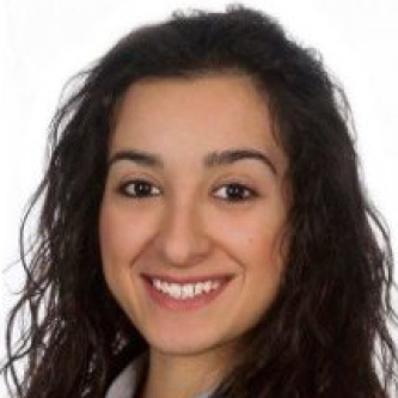
North East
Federica Rosaria Lisa
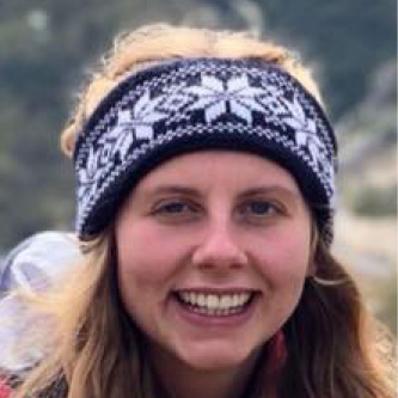
Scotland
Abigail Georgia Robinson

Winner - South East
Megan McGregor
Megan graduated from the University of Cambridge in 2015 with a first-class MSci in Natural Sciences, specialising in Materials Science for her final two years. With pilots in the family, aviation has always been of particular interest to Megan; this interest led her to embark on a PhD funded by EPSRC and Rolls-Royce plc investigating new alloys for commercial gas turbine engines. Her project looks specifically at a novel coating material required to attach abrasives onto the end of rotating turbine blades, in the pursuit of a more efficient shroudless sealing system.
Alongside her research, Megan recently completed an RCUK policy internship at the Government Office for Science, working on the Innovation and Industrial Strategy team as part of the Sustainable Economy Division. She enjoys being involved in her group's outreach activities, and has delivered a number of well-attended talks at the Cambridge Science Festival and at the inaugural Cambridge Soapbox Science event. In her spare time, Megan enjoys reviewing popular science books for Chemistry World, and studying Japanese - she is excited to visit Japan and present her research at the Beyond Nickel-Based Superalloys later this year.
World's hottest superglue: Materials requirements for better sealing in jet engines
Jet engines function using a high-temperature gas stream to do work and generate thrust. In the aviation industry, where fractional increases in efficiency equate to savings of hundreds of thousands of pounds, preventing loss of gas from this stream is crucially important. This requires sealing between the moving turbine blades and the stationary casing of the turbine. Any sealing solution must not only increase sealing efficiency, but must stand up to the ever-increasing temperatures and rotational speeds of turbines, whilst remaining light.
Such niche applications provide opportunities for new intermetallic materials, specially tailored to withstand this challenging environment. This talk will explain current and new sealing systems in the high-pressure turbines of jet engines, and explore the materials requirements for such new systems.

2nd place - South West & South Wales
James Grant
James graduated from Cardiff University with a BSc in Physics (with a year in industry) in 2017. Part of the Scouting and Feasibility team, his placement year with Merck ltd focused on optimising and stabilising electrophoretic materials for E-link applications. He started his EngD at Swansea University with the Materials and Manufacturing Academy (M2A) and TATA Steel in October 2017. His project currently focuses on developing novel coating solutions to improve surface finishing and product quality of Carbon Steel Conveyance Tubes under the supervision of Dr Chris Owen. The project aims to reduce high temperature oxidation during reheating and utilises techniques such as Simultaneous Thermal Analysis (STA) and Energy Dispersive X-Ray Spectroscopy (EDX).
Outside of his project, James is a keen runner, taking part in local Parkruns and half-marathons, and plays tennis regularly at Swansea Tennis Centre. He enjoys teaching and taking part in outreach projects aimed at encouraging younger students to pursue STEM subjects.
Electrophoretic materials: The resurgence of E-link through Frustrated Total Internal Reflection (F-TIR) films
E-link displays utilise electrophoretic materials to achieve their high contrast and low power characteristics. The use of encapsulated nanoparticles, charged by an inverse micelle mechanism, generates the black and white pixels required to form an image. These displays, however, only produce monochromatic images and traits such as inertial scrolling or video are implausible due to the limitations of current electrophoretic material technology.
The presentation explores how Frustrated Internal Reflection (F-TIR) films exploit evanescent wave propagation phenomena at the boundary surface to produce fast switching times in the device and how such F-TIR films can be employed to allow the integration of colour pigments. Research carried out by our team included optimisation of the stability of the electrophoretic material due to counter ion charging, as well as enhancing nanoparticle mobility through laser integrated reflectance spectroscopy.

3rd place - North West & North Wales
Jack Saunders
Jack obtained a MChem with industrial experience from the School of Chemistry, University of Manchester, in 2016. During his degree, he spent a year working for Unilever based in Port Sunlight. His final year was spent researching how students and the public learn chemistry and if the research can be conducted in a quantitative manner.
Following his degree, Jack moved schools to start his PhD under the supervision of Dr Lee Fielding in the School of Materials, University of Manchester. Sponsored by the EPSRC and AkzoNobel, Jack is researching the synthesis and application of polymer latexes for their use in protective coatings. Jack has presented his work at UK Colloids 2016, YRM 2017 and is planning on showing his work at both EPF19 in Crete and MC14 in Birmingham this year.
Watching paint dry: How to stop corrosion
Corrosion of metallic surfaces is estimated to cost the world around US$2.5 trillion every year (3.4% global GDP). From the DIY-er at home to the CEOs of BP and AkzoNobel, everyone has to deal with the damaging costs and dangerous effects of corrosion. Paints and coatings are used to delay corrosion from eating away at infrastructure, vehicles and homes. A push for the reduction in volatile organic compounds (VOCs) has led to an increase in the use of water-based paints. Water-based paints often comprise 50wt% suspended polymer particles and these particles have an essential role in preventing corrosion.
Excitingly, in the past 30 years, we have a better understanding of how water-based paints dry and are working towards controlling the structure of the dried paints and coatings. As technology advances, we are able to see into the nanoscale and gain a true insight into this important area of science.

Midlands
Matthew Wadge
Matthew graduated from the University of Nottingham with a first class BSc (Hons) degree in Biomedical Materials Science in 2017. His undergraduate achievements contributed to his receiving the Armourers and Brasiers' TWI Best BSc/BEng Student of the Year Award. Following on from his final year project work on generating biomedical titanate structures, he embarked upon a PhD within the Engineering Faculty at Nottingham, under the supervision of Professor David Grant, Dr Ifty Ahmed and Dr Reda Felfel. His PhD topic revolves around the translation of biomedical/antibacterial titanates, using DC magnetron sputtering, onto alternative biomedical materials for implantation. Matthew's constant inspiration for his project work is to help alleviate implant failure and improve natural implant fixation, ultimately to improve people's quality of life.
In addition to his project work, Matthew also actively helps and runs STEM outreach activities. He recently volunteered as both event manager (2017/18) and city co-ordinator (2018/19) for the Pint of Science festival in Nottingham, an annual international science outreach festival hosted over three nights in May in over 300 cities and 24 countries worldwide. As one of the two city co-ordinators, Matthew is responsible for over 60 volunteers, as well as 56 academic speakers. In addition, he has also helped organise 'An evening with astronaut Michael Foale', which had over 450 attendees. In his spare time, Matthew likes to engage in sports such as squash and football as well as playing the guitar.
Can titanates provide an alternative method of improving current implant surfaces?
Despite recent studies showing 70.6% of hip implants can survive for at least 15 years, the remaining percentage accounts for a large number of patients, considering nearly 90,000 hip implants were fitted in 2017 alone. Of these failures, aseptic loosening (implant loosening not due to infection), and infection make up nearly 40%; an alarmingly high number. With current methods of improving implant surfaces resulting in coating spallation due to high temperatures (>1,500C), how can we achieve better adhesion/antibacterial properties, without using such high temperatures?
The presentation will introduce an interesting alternative to the present method of plasma spraying hydroxyapatite, that can not only provide 'natural' adhesion between the implant and surrounding tissue, but can also be tailored to have further bioactive ('bone growing'), or antibacterial properties. Matthew will delve into the world of titanate structures, demonstrating the simplistic methodology to produce them and how to tailor them for specific applications. In addition, novel work into the effectiveness of gallium incorporation into the titanate structures will be presented.

North East
Federica Rosaria Lisa
Federica graduated from the University of Leicester in 2017 with an MChem in Chemistry with Forensic Science with a year in industry. She achieved First Class Honours and was awarded the Waters Ltd industry sponsored prize. Her industrial placement project at British American Tobacco was about understanding the impact of salts and filler on the physical characteristics of cigarette paper during combustion, and her Masters focused on the development of latent fingerprints on mild steel substrates via electrodes deposition of copper ions. Prior to completing her studies she was offered positions in academia and industry and eventually joined the British Steel graduate scheme as a Technical Graduate. Since then, she has worked on a range of technical projects at the Basic Oxygen Steelmaking plant, Continuous Billet Caster, Rail and Section Mill and also in Intellectual Property Rights, and R&D Tax Claims.
Federica is fluent in English, Italian and Spanish with basic knowledge of German and French. She has represented various companies and organisations such as British Steel, British American Tobacco, University of Leicester and Royal Society of Chemistry, worked with external companies and organised international conferences, as well as training courses for the Red Cross and Doctors without Borders. She is constantly motivated to increase her lever of knowledge and improve her skills. Outside her work, she is a STEM and WIME Ambassador, and a mentor and GCSE tutor at a college. She enjoys learning languages, science, business, exploring cultures, travelling, being adventurous, innovative and playing sports.
Understanding the factors that influence power and graphite electrode consumption at ladle arc furnaces and how these can be reduced
Over the last three years, British Steel has seen a gradual increase in power input and graphite electrode consumption at the ladle arc furnaces for the manufacture of steel. The aim of this research was to understand the factors that influence high consumption and suggest improved alternatives to create a model in the future. Previous research showed that oxidation and sublimation affect the use of graphite electrodes by 80-85% due to both physical and chemical factors. In this investigation, it was also discovered that both power and electrode consumption were highly dependent on factors such as plant availability, human factors, schedule adherence and logistics. Possible alternatives to reduce power and electrode consumption were identified and suggested. These improvements will help reduce energy use, maintenance and number of graphite electrodes, and improve consistency. In financial terms, this work could give savings of over £1 million annually.

Scotland
Abigail Georgia Robinson
Abigail is a fourth year undergraduate student at the University of St Andrews on the MGeol in Earth and Environmental Sciences degree programme. During her time as an undergraduate she has taken on several geoscience projects. In July 2018, she carried out work for the Paneth Meteorite Trust under the supervision of Dr Marissa Tremblay at SUERC. This work involved statistically matching lunar meteorites to their likely source regions on the moon using remote sensing geochemistry data which was recently presented along Dr Tremblay's wider body of work at the 2019 Lunar and Planetary Science conference.
As one of the 15 science Laidlaw Fellows at St Andrews, Abigail was awarded research funds to study the interplay between climate change, hydrology and Medieval irrigation systems in Armenia. This project included two weeks of fieldwork in Armenia and will be followed up during a return trip in August 2019. In summer 2019, she will undertake a 5-week expedition to the Lofdal carbonite complex in Namibia - a heavy rare earth element enriched deposit. This work is in collaboration with Namibia Critical Metals and Gecko Corp. and has been generously supported by the MIS Trust.
Abigail will graduate in June 2020 and plans to continue her passion for research by embarking on a PhD. In addition to her academic love of rocks, Abigail enjoys rock climbing, listening to rock music and baking rock buns.
Mysterious moon rocks: Locating the source site of lunar meteorites
Lunar meteorites were first identified on Earth in the early 1980s. Prior to this, the only known samples of lunar rock on earth were those retrieved during the NASA-Apollo and Soviet-Luna missions. Problematically, these mission-retrieved samples were collected from a small source region and represent only ~4% of the moon's surface. On the other hand, lunar meteorites could originate from any cratered site on the moon's surface and so provide a much more comprehensive view into lunar mineralogy, chemistry and geological processes.
Despite this, a major drawback in lunar meteorite research is that we don't know where on the moon each lunar meteorite is sourced from. This presentation describes the research to match lunar samples on Earth to their likely source region on the moon and discuss how linking this information helps further constrain early solar system processes and could potentially assist future moon mining.
 2018 YPLC final - 28 April | The Armourers' Hall, London
2018 YPLC final - 28 April | The Armourers' Hall, London

Winner - Midlands
Sam Lawton

2nd place - South East
Gabrielle Bourret-Sicotte

3rd place - North East
Chloe Fisher
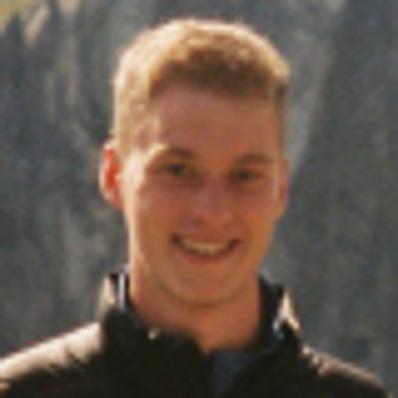
Scotland
Ian Cawood
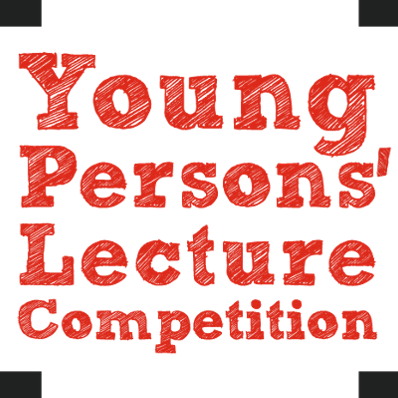
South West & South Wales
Pablo Martines Pancorbo

North West & North Wales
Josh Turner

Winner - Midlands
Sam Lawton
Sam graduated from the University of Warwick with an MChem in 2014. His masters project, in the Warwick Electrochemistry and Interfaces Group (WEIG), focused on the large scale synthesis and patterning of graphene nano-ribbons. With a taste for organic based electronics Sam was inspired to work in the field of renewable energy resources, specifically organic solar cells.
Sam started his PhD under the supervision of Professor David Haddleton in July 2014. His PhD is sponsored by Merck ltd's advanced materials sector and focusses on investigating the intricate connection between backbone structure and optoelectronic properties of conjugated polymers for application in organic photovoltaics. Sam's research and eagerness to learn has taken him to the USA to work with Professor Wei You at the University of North Carolina (Chapel Hill) and to present his work at a number of international conferences, most recently the American Chemical Society Spring Meeting in San Francisco, April 2017.
Outside of his project, Sam has worked with external companies through the Warwick Polymer Characterisation RTP on a number of materials characterisation and analysis projects. He has also taken on roles outside of the lab organising and hosting the social events for Warwick 2016 Polymer conference (500+ attendees). In his free time, Sam likes to engage in sports such as squash, football and running, although when it comes to the rugby, he's more at home sitting back and watching the professionals do it.
Polymer power: From light to current
With the world's energy demand predicted to increase by 48% between 2012 and 2020, relying on the limited supply of traditional fuels is no longer a viable option. Further to their growing scarcity, traditional fuel supplies release large amounts of waste and are a major contributor to annual greenhouse gas emissions. Inspired by the growing demand for economically viable and renewable energy sources, Organic Photovoltaics (OPV's) are attracting significant attention. With efficiencies exceeding 12%, these devices are nearing commercialisation.
In this talk I introduce some of the semiconducting plastics used in organic photovoltaics and we explore how molecular sequence in polymers can influence their properties and the future of this market. I look at what influences the world of science and technology and demonstrate how the world around us can be an infinite source of inspiration in world leading research.

2nd place - South East
Gabrielle Bourret-Sicotte
Gabrielle graduated from University College London (UCL) with a 1st Class Bachelors in Mechanical Engineering in 2015. Continuing her passion for renewable energies, she undertook a PhD in material sciences at the University of Oxford, where she currently focuses on solar photovoltaics. Gabrielle envisages that her research on silicon solar cells will have a significant impact on the industry, making cells more efficient and enhancing the availability of solar electricity as a global alternative energy solution.
Gabrielle's novel method of optimising solar cell efficiencies is internationally recognised and has achieved commendation through multiple publications and a selection for a journal cover. Her work has been presented at numerous international conferences, and Gabrielle's enthusiasm earned her the prize for 'best student presenter' at the 2017 GADEST conference in Georgia. This passion for renewables is also reflected through her previous work, which includes time spent developing Turkish wind farms for EDF Energies Nouvelles.
When not in the lab, you have most opportunities finding Gabrielle hiking with her friends through Norwegian fjords or rock climbing in her home country of France. She hopes to combine her love for the great outdoors with renewable energy and sustainable development in her future career.
Shielded hydrogen passivation: Making efficient solar cells
Renewable energy is needed to solve the current energy crisis and ultimately reduce the effect of global warming. Solar photovoltaics are a great candidate as the earth receives 1,000 times more solar energy every year than its current electricity consumption. To make solar panels the norm however, they must become economically viable.
In this lecture, I introduce the concept of grid parity and how increasing panel efficiency differs from reducing module cost. Increased panel efficiency can be achieved with Shielded Hydrogen Passivation (SHP) which is a novel method we invented as part of my DPhil. It introduces hydrogen into silicon which is widely known to improve final panel efficiency, and does so at very low temperatures allowing for the passivation of 3rd generation solar cells. In this way, innovating materials science is exploiting the universe's most abundant element and leading the way in solving one of the greatest crises humanity has faced.

3rd place - North East
Chloe Fisher
Chloe graduated with a bachelor's degree in Chemistry from the University of Sheffield in 2013. Following this she started working for the Cutlery and Allied Trade Research Association (CATRA) in Sheffield as a materials technologist, testing kitchenware in accordance with British and international testing standards. Chloe carried out testing on stainless steel kitchen knives, cutlery and pans, investigating the material composition, corrosion resistance and other physical properties of the materials used in the manufacturing of these products. Chloe was fortunate enough to be sponsored by CATRA to do a masters degree at the University of Leeds in materials science and engineering and in 2016, she completed the MSc with distinction. The third semester of the MSc involved conducting a research project, and hers was on the topic of lead-free piezoelectric ceramics with Professor Andrew Bell. She returned to work for CATRA for another year, before beginning a PhD at the University of Leeds with Professor Bell in October 2017, sponsored by the EPSRC and Thales UK. Her PhD project is novel lead-free piezoelectric ceramics for sonar transducers.
Outside work, Chloe enjoys spending time with family and friends and keeping fit; since moving to Leeds, she has joined a martial arts gym and begun Kickboxing classes.
A 'how-to' guide for manufacturing a stainless steel kitchen knife that is a cut above the rest
Kitchen knives are a product familiar to everyone in the home. We know what we want from a kitchen knife; sharpness, edge durability without corrosion, and we would hope that the more we pay for kitchen knives, the more these standards should be guaranteed. In this presentation I will use my industry experience at a company that carries out testing and consultancy for cutlery manufacturers and buyers to discuss how a combination of material composition, microstructural control, and production and manufacturing techniques can affect the quality and lifetime of a kitchen knife blade. This will involve a critical assessment of martensitic stainless steel and the benefits and pitfalls to its application in kitchen knives. This will be followed by an illustration of the ideal manufacturing process for a kitchen knife and some of the errors that are frequently made in these processes, focussing mainly on two common errors - slow cooling from the hardening temperature and the heat affected zone at the weld.
To conclude, I will discuss some of the testing that is carried out in accordance with British and international standards to spot these manufacturing errors and to ensure the quality of kitchen knives before they make it to the supermarket shelf.

Scotland
Ian Cawood
Ian is a final year BSc Geology student at the University of St Andrews. During his time at St Andrews, Ian has been involved in extensive field work and a diverse range of research projects. Most recently, Ian was funded by the MIS and IOM3 to complete field work as part of his final year dissertation in the French Pyrenees for 6 weeks, mapping a complex shear zone over the Saint Barthelemy Massif. His interest in both field and lab work has led to his most recent work on the Greendale Appinite Complex in Nova Scotia.
In 2019, Ian plans to undertake a PhD to unravel the processes responsible for the formation of continental crust through its generation and stabilisation in modern and ancient mountain belts. In particular, he is interested in the tectonothermal evolution of the crust associated with orogenesis; the process of thickening and stabilising the crust through structural, metamorphic and magmatic processes. His aim is to do this through integrated field and geochemical studies.
Ian is currently completing his dissertation work and studying for final year exams. Away from work, he enjoys swimming, tennis, hill walking and playing music.
Water and the earth's crust: The role and source of water in a crystallising magma
Appinites are amphibole rich plutonic rocks that typically form in convergent to collisional tectonic settings. Amphibole is a mineral that uniquely records magma chamber through its isotopic ratios of D/H and 18O/16O thus informing on magma transport, storage and evolution in the crust.
Two generations of amphiboles in the Greendale Complex appinites are identified: one derived from the mantle (δ18O 4.8 - 6.8‰) and the other from the crust (δ18O 0.9 - 4.7‰). δD isotopic signatures are favoured to be the result of mixing between a region of mantle upwelling and a subducting slab, allowing for hydration of the magma during ascent.
Appinites are widely believed to be the result of asthenospheric upwelling. The collected δD and δ18O isotopic data provides firm evidence in support of this interpretation and suggests that appinitic complexes may be tracer of such processes.

South West & South Wales
Pablo Martines Pancorbo
Pablo graduated from Complutense University of Madrid (Spain) in 2015 with a BSc in Physics. After that, he worked as Physics Technician in London, being in charge of Health and Safety in two physics labs. He started his MSc in Physics of Complex Systems at National University of Distance Education (Spain), before joining the Centre for Doctoral Training in Metamaterials (CDT XM2) as a PhD student in Materials Engineering and Biomedical Physics in the College of Engineering, Mathematics and Physical Sciences (CEMPS) at the University of Exeter in 2016. Pablo is working under the supervision of Professor Yanqiu Zhu and Professor Nick Stone. His current PhD project involves the synthesis of a new type of core-shell composite nanoparticle that is able to find single cancer cells with a scattered light-based technique called Surface Enhanced Raman Spectroscopy (SERS). The aim of his project is identifying cancer via this advanced material at an early stage to increment substantially the survival rate of cancer patients.
Pablo has presented his EPSRC-funded work at the 13th International Conference on Materials Chemistry of the Royal Society of Chemistry (RSC). He was also shortlisted to present his research at the STEM for BRITAIN Exhibition at Portcullis House, Westminster in 2018. His knowledge in materials engineering and chemistry allowed him to publish in a book chapter about the electrochemical conversion of CO2 into valuable products. Before joining his current project, he published a paper in collaboration with the European Space Agency on the effect of gravitational fluctuations in ternary mixtures under thermal gradients.
In addition to this, Pablo is the elected Treasurer of the Exeter University Optics and Photonics Society (EUOPS) - OSA and SPIE student chapters. He is also a representative member of the CDT XM2 Student Advisory Group (SAG) and a committee member at the University of Exeter CEMPS Postgraduate Liaison Forum. Moreover, he usually volunteers in outreach activities for the Institute of Physics (IOP) and EUOPS. He always tries to connect people with scientific and technological progress to make the world a better place for future generations.
Early-stage cancer imaging with novel nanoparticles
Cancer is one of the main challenges of the 21st century in developed countries. There are several techniques to identify and image it that have proved their capabilities for large cancer tissue. Unfortunately, when cancer spreads to large-scale structures, it can be too late to save the patient. There is an urgent need in finding single cancer cells in the early-stage to improve the rate of survival after applying the therapy. Nanoparticles functionalized with antibodies for cancer attachment have displayed the ability to identify single cancer cells.
This talk introduces a novel Au-SiO2-WO3 core-shell composite nanoparticle which displays strong cancer imaging capabilities via light scattering and potential hyperthermia treatment. The more materials form the nanoparticle, the more useful properties can be used for a highly accurate cancer imaging and subsequent cancer therapy. These novel nanoparticles can broaden the horizons of biomedical material science in the upcoming decades.

North West & North Wales
Josh Turner
Josh graduated from the Queen's College, Oxford in 2013 with an MChem in Chemistry. His final year Masters thesis, supervised by Professor Simon Aldridge, titled 'Co-ordination and Activation of Gallium Hydrides at Transition Metal Centres'. Subsequently, he went on to complete a PhD at the University of Bristol, supervised by Professor Ian Manners. Whilst there, his work focused on investigating reaction mechanisms related to inorganic polymer synthesis, which culminated in a thesis entitled 'The Use of Iron in the Dehydrocoupling of Amine- and Phosphine-Borane Adducts'.
Since finishing his PhD in 2017, Josh moved on to work for the National Nuclear Laboratory as a Chemistry Research Associate. Away from work, he spends time playing hockey, tennis and enjoying that the Lake District is on his back door!
Exploring inorganic main group polymers
The use of polymers permeates our modern lives in such a way that any attempt to consider a world without them is unthinkable. Curiously though, the vast majority of the polymers in use today have backbones from only a handful of elements. What about synthesising polymers out of other elements of the periodic table, perhaps other elements from the main group? Over the last 30 years, a number of polymers have been reported where the backbone has been derived from other main group elements. How far have we come and what are the key challenges faced?
From polyaminoboranes to polysilanes, this lecture will give an overview of the area, with specific attention placed on the story of polyphosphinoboranes, and polyphosphazenes. These two examples compare stories of technologies at different stages of development.
 2017 YPLC final - 26 April | The Armourers' Hall, London
2017 YPLC final - 26 April | The Armourers' Hall, London
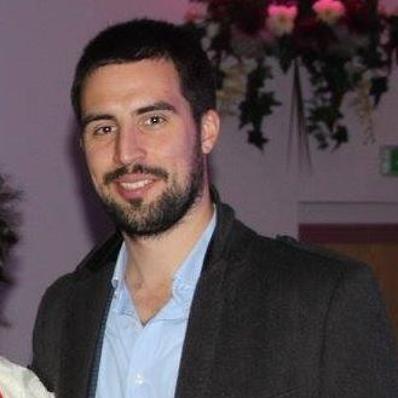
Winner - South East
Ilija Rasovic
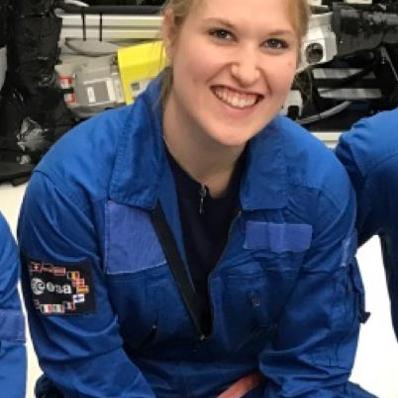
2nd place - Midlands
Amanda Field

3rd place - Scotland
Marli De Jongh
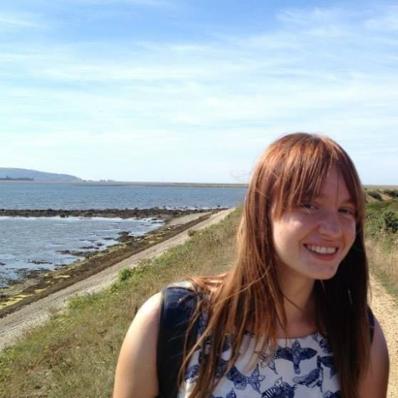
South West & South Wales
Jemma Rowlandson
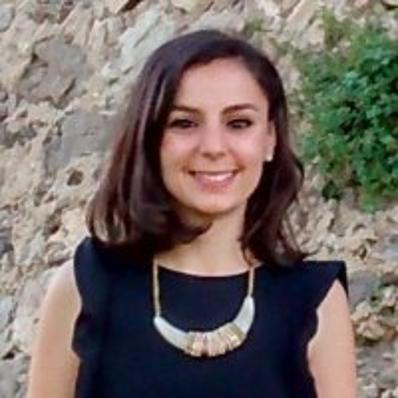
North West & North Wales
Beatriz Mingo
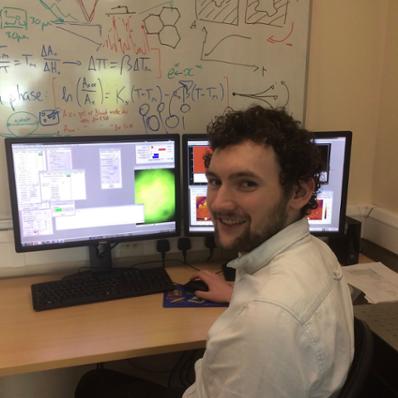
North East
Will Foster

Winner - South East
Ilija Rasovic
Ilija graduated from Corpus Christi College, Oxford in 2014 with an MEng in Materials Science, before embarking upon a DPhil in Professor Kyriakos Porfyrakis' Carbon Nanomaterials Laboratory in the same department. His multidisciplinary research has two foci: synthesising water-soluble fullerene derivatives for a slew of medical applications, and also incorporating fullerenes into functional molecular machines. Combining the two, he hopes to pave a way to creating nanomedicines of the future.
Ilija has presented his EPSRC-funded work at the international NanoteC conference, and won the IOM3 Literature Review Prize in 2016 with his review on water-soluble fullerenes for medical applications. His knowledge of fullerene chemistry has also allowed him to publish in the field of organic electronics. Before being taken by fullerenes, he spent some time running virtual crash tests at Jaguar Land Rover, assessing failure modes of critical components.
Away from the lab, Ilija is an active STEM ambassador, regularly giving outreach talks to encourage students to apply for study at Oxford, and to sow interest in Materials Science. He tutors 1st and 2nd year Materials Science undergraduates in all their polymers courses, and also marks the Physics Aptitude Tests for prospective applicants. In his spare time, Ilija loses himself either playing music or running around on a football pitch.
Making the world's most expensive material
Diamond, tritium, time... All often said to be the most valuable things in this world. In Oxford, we have created and sold the world's most expensive material. Designer Carbon Materials produces N@C60, a type of endohedral fullerene, which is a football-shaped carbon cage encapsulating a nitrogen atom. I will introduce what the fullerenes are and how we make this unique family of materials, before specifically discussing the synthesis of the beautiful N@C60 molecule and its lengthy purification procedure.
The unprecedented ability to isolate atomic nitrogen at room temperature in this way holds great promise for technological applications of the future, particularly in quantum computing and the production of miniature atomic clocks. If we can overcome the major hurdle of lowering the price of this remarkable material, then its widespread use in these applications will herald the onset of a technological revolution.

2nd place - Midlands
Amanda Field
Amanda graduated from the University of Birmingham in 2015 with a BEng in Materials Science and Technology and was awarded the Sir Horace Clarke prize for all Round Merit in Final Examinations. She is now in the second year of her PhD with AMPLab at the University of Birmingham working with UK Atomic Energy Authority on the Additive Manufacture of Refractory Metals and Alloys for use in a Nuclear Fusion Reactor. For this, she is investigating Selective Laser Melting as a potential means of producing improved divertor type components.
Amanda's work has been affiliated with the European AMAZE project (Additive Manufacturing Aiming Towards Zero Waste and Efficient Production of High-Tech Metal Products), and her work has been presented at conferences including MS&T and TMS. Amanda has also been lucky enough to be involved with an experimental parabolic flight campaign in Bordeaux, France for the European Space Agency where a demonstrator device was used to 3D print metal in zero gravity.
Amanda is a STEM ambassador and also enjoys lab demonstrating for the undergraduate students. She was also the president of the Birmingham University Materials Society. In her spare time she enjoys baking and days out with friends.
Additive manufacturing for nuclear fusion
Additive manufacturing, particularly Selective Laser Melting (SLM) and its suitability for the fusion industry will be covered in this talk. Additive manufacturing is a netshape process whereby material is deposited, and melted layer-by-layer to build up a final component.
Complex internal geometries can be produced allowing for weight savings and design improvements. However, there is a need for material specific optimisation which slows progress. The technique is now well understood for weldable metallic materials such as nickel and aluminium. By contrast, brittle, high melting point materials like tungsten pose a greater challenge.
Tungsten is a candidate material for nuclear fusion; it can withstand high heat loads and irradiation doses and does not require long term nuclear waste storage after use. However, oxygen segregation and rapid cooling rates cause problems with cracking. Future work will investigate the possibility of liquid phase alloying, and producing complex cooling channels advantageous to plasma-facing components.

3rd place - Scotland
Marli De Jongh
Marli is a current BSc Earth Science student in her final year as an undergraduate at the University of Glasgow. During her time at university, Marli has been specifically interested in planetary geology which led to her final year research project which focused on impactites.
Throughout her undergraduate degree, Marli has shown interest in a variety of fields within Earth Science. In 2015, Marli travelled to Peru to work as a research assistant within the remote regions of the Pacaya-Samiria Reserve. This involved data collection and monitoring of local animals including dolphins, monkeys and caiman. Marli has also shown interest in igneous petrology and volcanology during her time at university. In 2016, she completed an internship with GeoTenerife, in collaboration with INVOLCAN, which involved gas sampling on the island of La Palma and crater of Mount Teide.
Marli is currently studying for her final year exams and looking for more opportunities to broaden her experiences within the field of Earth Science. When Marli is not studying, she enjoys hill walking and camping.
Shocked suevites from the Ries crater: Insights into the dynamics of hypervelocity impacts
The Ries structure in Germany was first recognised as an impact crater after the discovery coesite and stishovite in the 1960s and is regarded as a type of locality for suevite (French & Koeberl, 2010). Suevite is a polymict impact breccia which has been a subject to shock metamorphism (Stöffler & al 2013). It is also the most controversial impractite found in impact structures and its genesis is poorly understood.
To determine how suevite forms, it is essential to increase the current understanding of hypervelocity impacts. This can be achieved by assessing the homogeneity of shock across suevite samples. Optical Microscopy, Scanning Electron Microscopy (SEM) and Raman Spectroscopy were used to assess the degree of shock across samples. Preliminary results suggest that the degree of shock across suevite samples is not homogeneous, implying suevite genesis is likely to be a variable, multistep process involving complex modes of transportation from different parts of the crater.

South West & South Wales
Jemma Rowlandson
Jemma graduated from the University of Southampton in 2013 with a MChem in Chemistry. She then completed a Masters in Sustainable Chemical Technologies at the University of Bath. Jemma is now a final year PhD student at the University of Bristol. Her research under Dr Valeska Ting and Professor Karen Edler (University of Bath) focuses on the preparation of activated carbon materials from waste feedstocks. She aims to produce activated carbons with a tuneable pore size, so they are applicable to a variety of sustainable applications from the removal of waste water contaminants to the storage of hydrogen.
Jemma has a keen interest in public engagement and is an active STEM ambassador. She was the Chair of the Women in Engineering Student Group (WESBath) and co-ordinated their school outreach activities. Jemma won the University of Bath's Vice-Chancellor's Postgraduate Prize for Public Engagement in 2016 and was invited to give a public lecture at the Royal Society of Chemistry on nanoporous materials. She has also participated in Science Show Off, FameLab, and Three Minute Thesis events.
Saving the world with Leerdammer cheese: Engineering activated carbons for clean water
Activated carbon is a surprisingly ancient material, which happens to have a lot in common with Leerdammer cheese. Carbons may not be bright yellow, nor are they really edible, they are however full of holes. In fact, it is their thousands of nano-scale sized pores (a nanometre is one millionth of a millimetre), which makes them potentially world-saving! Activated carbons are able to remove toxins from our water supply by a process known as adsorption. The molecules simply stick to the surface of the carbon, where we can destroy them with heat.
One of the key parameters for carbons to remove water toxins effectively is their porosity; the shape and size of their nano-scale holes. This research aims to trap trickier to remove toxins by controlling the porosity of the carbon. We start with a natural polymer called lignin, which is found in all plants, and is a major by-product of the paper industry. We determined the structure of the polymer and how it varies between different plants. Using this information we have managed to control the type of carbon we make, simply by changing the plant our lignin comes from. Controlling the carbon structure like this is the first step to targeting water toxins. Our future research focuses on further controlling the pore sizes, and testing these materials against the difficult to remove pesticide mataldhyde.

North West & North Wales
Beatriz Mingo
Beatriz graduated in Chemistry (2011), completed her Masters in Materials Science Technology (2012) and defended her PhD thesis (2016) at the Complutense University of Madrid (UCM, Spain). During her PhD she studied different strategies to improve the corrosion resistance of aluminium and magnesium alloys with potential application in the transport industry. She paid special attention to the development of surface treatments based on Plasma Electrolytic Oxidation which laid the foundations for her subsequent research project based on active protective coatings with smart functionalities, in which she is currently involved as a Research Associate at the University of Manchester.
Her research has resulted in 18 SCI journal publications and 15 contributions to conferences. In 2013 the British-Spanish Society granted her a scholarship to complete her academic training in cutting edge 3D characterisation techniques at the University of Manchester, and in 2016 the European Federation of Corrosion awarded her with the Eurocorr Young Scientist Grant, which is aimed at promoting knowledge exchange between young and international senior scientists.
In parallel, she has been a teaching assistant for four academic years with more than 200 hours of experience. Her interest in Education led her to enrol in a Master's degree in Teacher Training in Secondary and Upper Secondary Education (2014). Additionally, from 2012 to 2016 she was the Masters and PhD students representative for the Materials Science department at the UCM.
Smart Coatings: Challenges and Opportunities
Unlike inert coatings providing a physical barrier against environment, smart coatings are able to interact with it and respond to certain triggers. The smart function relies upon material ability to release on-demand active species. Heretofore, this has been achieved in organic or hybrid coatings, including self-healing films that restore damaged polymeric matrix and anti-corrosion coatings that mitigate corrosion attack by releasing encapsulated inhibitors when detecting pH changes from electrochemical activity. However, applicability of such coatings is limited by their poor thermal and mechanical properties. Attaining smart functionality to ceramic coatings could overcome this limitation, although the inert nature of ceramics hinders incorporation of active species.
We discuss how this problem can be resolved using advanced electrolytic-plasma surface treatments of lightweight metallic materials, expanding their application towards high-performance components in transport and aerospace as well as new generation of biodegradable metallic implants loaded with anti-inflammatory and antibiotic drugs.

North East
Will Foster
Will graduated from the University of Manchester in 2015 with a MPhys in Physics. During his Masters year he worked in the liquid crystals group studying the unique electro-optic properties of biaxial crystals. For this work he was awarded the departmental Platt Prize for the best experimental work in the final year of the degree programme.
He then moved to Durham to join the Soft Matter and Functional Interfaces CDT (SOFI), a collaboration between the Universities of Durham, Leeds and Edinburgh. As part of SOFI he spent 6 months training with 14 other PhD students tackling case studies set by external industrial partners. Highlights include learning about the science of ice-cream and working on water purification systems.
As of April 2016, Will has been working in the Durham Physics Soft Matter Group on his PhD supervised by Dr Kislon Voïtchovsky and Dr Halim Kusumaatmaja. His interests lie in investigating the self-assembly of water and alcohol mixtures at solid interfaces. Aside from his research he also writes for the SOFI newsletter as well as assisting in its design.
Cocktail Science: Molecular organisation of water and alcohol mixtures at solid interfaces
When enjoying a cocktail the last thing you might think about is research, but in fact the mixture inside your glass is scientifically fascinating and has important applications beyond the world of mixology. For example, in water-alcohol mixtures it is known that the alcohol induces dramatic changes in the topology of the water hydrogen-bonding network. Furthermore, hydrophobic surfaces cause water-alcohol mixtures to spontaneously nucleate solid 2D supramolecular monolayer assemblies at the solid-liquid interface. These monolayers are stabilized by networks of hydrogen bonds and demonstrate remarkable levels of stability. The nucleation of these monolayers is interesting and relevant for both fundamental science and industry where many interfacial processes involve water-alcohol mixtures.
In this talk I will explain the occurrence of this phenomenon, present investigations into other novel structures using Atomic Force Microscopy and Molecular Dynamics simulations and show how studying the science of your drink reveals exciting possibilities for creating nanostructures.
 2016 YPLC final - 20 April | The Armourers' Hall, London
2016 YPLC final - 20 April | The Armourers' Hall, London

Winner - North East
Colleen Mann

2nd place - South West & South Wales
Ryan Marks

3rd place - Midlands
Harriett Parnell

Parsons Conference
Hollie Rosier
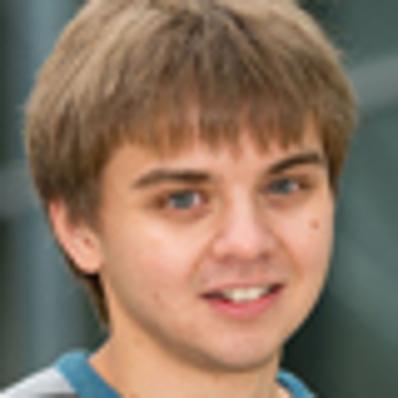
Scotland
James Mansfield

North West & North Wales
Giacomo Bertali

South East
James Dolan

Winner - North East
Colleen Mann
After graduating from Queen's University, Belfast, in 2013 with an MSc in Chemistry, Colleen embarked upon a PhD working within the Immobilisation Science Laboratory at the University of Sheffield. The focus of her work is to determine the durability of glass in conditions that simulate that of a Geological Disposal Facility (GDF). An understanding of the reaction mechanisms and dissolution chemistry involved can help predict how the glass wasteform will behave in a GDF, which is key for safe geological disposal of nuclear waste.
Colleen's work, part of which has been field work in association with the British Geological Survey, has been presented at IGDTP, Thermal Treatment of Rad Waste and GeoRepNet conferences. Additionally, after being awarded funding by the Mineralogical Society of Great Britain and Ireland, and the Sheffield Metallurgical and Engineering Association, she was able to travel to speak at the prestigious Goldschmidt conference in Prague.
When she's not busy in the lab, Colleen relishes her role as a STEM ambassador in which capacity she has worked with schools during National Science Week and with the Museum of Science and Industry, where she engaged with the public about nuclear power and waste disposal. She is also involved in the Global Engineering Challenge at the University of Sheffield, facilitating 1st year undergraduates in tackling real-world problems from a global perspective.
In the Bin for 100,000 Years: An Intergenerational Burden
The UK Government have stated their preference for the final disposal of nuclear waste within a GDF, at a depth of between 200m and 1km. The GDF will incorporate Engineered Barrier Systems (EBS) that will be optimised to physically and chemically retard the transport of radionuclides to the biosphere. Groundwater will interact with the cementitious EBS which will produce alkaline conditions within the GDF; it is not well understood how such solutions will affect the durability of vitrified nuclear waste.
The results of an experimental study using simulant glass wasteforms exposed to cementitious leachate will be discussed. Additionally, Colleen will describe a natural analogue study in which 60-year old glass bottles, discarded in high pH leachate pools (pH~12.5) at a lime-waste site in the UK, are being investigated to understand the nature of alteration layers and the evolution of ground water at the site.

2nd place - South West & South Wales
Ryan Marks
Ryan completed his MEng in Mechanical Engineering in 2013 at Cardiff University during which he also undertook an industrial placement with Airbus in Filton. Upon graduating, Ryan joined the structural performance group at Cardiff University with Industrial support from Airbus to study for a PhD in the optimisation of acoustic emission sensor locations for the real-time damage monitoring of aerospace structures.
Through his studies, successful methodologies have been developed which have involved the use of 3D scanning laser vibrometry, finite difference simulations and genetic algorithms. Ryan is set to complete his PhD this year after which he has accepted a post as a research associate at Cardiff University to further develop these techniques.
Aside from aerospace research, Ryan works with the university's formula student team engaging in many of their outreach activities. Through these activities, Ryan has visited local schools in the South Wales region, with particular focus on areas where aspirations are low, to promote STEM subjects to the next generation.
Using Virtual Techniques to Locate Fatigue Cracks in Aerospace Structures
The need for lighter, greener aircraft is leading designers to design aircraft structures from more complex materials. The complexity in these materials introduces a degree of uncertainty over time and their susceptibility to damage.
Continuously monitoring the structures for damage is a proposed method of ensuring airworthiness. However, locating damage on a complex structure is challenging and not possible to achieve by traditional methods. A experimental technique known as 'Delta-T' has been devised to locate acoustic emission from damage on complex structures and has proven highly successful in lab based trials. However, the technique is time consuming and not viable for in-service operation. A virtual training technique has been developed to training acoustic emission sensor networks removing the need for experimental training. This technique has proven to be successful in locating fatigue cracks on a real complex metallic structure which has been experimental subjected to cyclic loading.

3rd place - Midlands
Harriett Parnell
Harriett graduated from the University of Nottingham in 2014 with a BSc (Hons) specialising in Biomedical Materials Science. Later that year she joined the Mid-Infrared Photonics Group, once again at the University of Nottingham, where she is now studying for her PhD. Inspired by the interdisciplinary nature of her undergraduate course, she is currently investigating a group of mid-infrared (MIR) transmitting glasses, called chalcogenides, for use in early cancer diagnosis. After an exciting first year of study, Harriett has gained a greater understanding of her chalcogenide glass system and hopes to use this knowledge towards the development of an MIR fibre optic probe, for in vivo cancer detection. As well as her research, Harriett is also an active member of her Faculty, running a number of engagement masterclasses including one hosted by Jorge Cham, creator of the well-loved PhD comics. In 2015 she was also awarded the University's Chaplin Ambassador's Award for her long-standing commitment outreach work within the local community.
Shedding Light on Cancer: GeSbSe Glass fibres for the Mid-infrared Optical Biopsy
In the UK, it is now recognised that 1 in 2 people born after 1960 will develop some form of cancer during their lifetime. Diagnosing patients whilst in the early stages drastically improves their chances of survival, but up until now the gold standard for cancer detection is via a lengthy analysis of an extracted biopsy. However, the mid-infrared (MIR) spectral region could offer an immediate in vivo response. Spanning 3-25µm wavelengths, MIR light covers the characteristic vibrations of biological bonds - commonly known as the molecular fingerprint. Subtle changes within this region could help confirm the presence or absence of a disease. Reaching these wavelengths has previously presented difficulties however, chalcogenide glasses have been shown to transmit MIR light out to 25µm extra wavelength. Here, a composition from the GeSbSe system is reported, assessing it suitability as an optical fibre for the delivery and collection of MIR light.

Parsons Conference
Hollie Rosier
Hollie completed a BEng in Aerospace Engineering in 2011 at Swansea University. Her interest in materials for aerospace applications led into her studying a PhD in Materials Engineering as part of the Rolls-Royce University Strategic Partnership scheme. Since completing her PhD, Hollie is now a post-doctoral materials research scientist in the Institute of Structural Materials, where she maintains her links with Rolls-Royce.
Her current specialisation is in the field of high temperature corrosion-fatigue amongst nickel-based superalloys, specifically developed for turbine disc application within the gas turbine engine.
High Temperature Corrosion-fatigue In Nickel-based Superalloys
A material's mechanical performance is generally characterised in air, however when we consider a turbine disc, it is clear that a number of influential environmental factors are present. The study of nickel-based superalloys within a corrosive environment at high temperatures has always been limited due to testing technology. Recent advances in capability have enabled the fatigue and crack propagation testing of these alloys at temperatures in the region of 700-800C with the addition of salts and sulphur-bearing gases.
The current research has explored a number of variables that a typical turbine disc alloy will witness, including the interaction of different fatigue loading cycles with the corrosion-fatigue behaviour and the role of contaminants in the atmosphere and how these can influence the life of the alloy.

Scotland
James Mansfield
James is currently studying for his BSc in Earth Science at the University of Glasgow. Achieving the prestigious Sir E B Bailey prize for outstanding performance in his earlier studies, James has a keen interest in geomorphology and geological hazards. It is this passion that has led him to pursue a future in academia, applying for both MScs and PhDs across the country.
Alongside his studies, James also enjoys undertaking volunteer work, with recent roles involving assisting less able people to use computers and co-ordinating Earth Science involvement in public engagement events.
The Suitability of Apatite as A Radioactive Waste Store
Apatite, a synthesizable phosphate mineral, has been considered a suitable material for radioactive waste storage owing to its ability to incorporate a range of elements and heal damage. However, the effect of radiation damage on apatite's long term durability remains a concern.
I will establish if this damage adversely affects the solubility and mineralogical structure of the apatite, specifically after prolonged exposure to groundwater. Preliminary results imply dissolution of uranium rich apatite after exposure to minimally acidic natural groundwater solution (pH5-6) for a period of thirty days. Complete dissolution was noted in both high-and low-uranium apatite when a weak acid solution (pH4) was used to mimic extreme groundwater acidity.
These results diminish apatite's solubility as a radioactive waste storage medium, as they suggest a waste repository breach (even by a weakly acidic groundwater solution) could rapidly release harmful radioactive elements into the far environment.

North West & North Wales
Giacomo Bertali
Giacomo gained his BSc in Material Engineering in 2011 from the University of Trieste (Italy), specialising in Metallurgy and Corrosion Control Engineering. He then got a MSc in Corrosion Control Engineering from the University of Manchester, focusing on corrosion and failure mechanisms that affect the Nuclear and Oil & Gas industries. He is now completing a PhD at the Material Performance Centre, University of Manchester, in collaboration with AREVA NP. The main topic of his project is an in-depth study on Preferential Intergranular Oxidation and Intergranular Stress Corrosion Cracking Susceptibility of Ni-based Alloy 600 in Pressurised Water Reactor Primary Water. The aim of this project is to imporve the mechanical understanding of this failure mechanism in order to mitigate accidents and improve nuclear power plant safety.
Mainly using advanced characterisation techniques such as SEM, TEM, FIB and STEM-EDX microanalysis to study in-depth the material behaviour at the microscopic and nanometric scale.
High Temperature Oxidation and Stress Corrosion Cracking Susceptibility of Alloy 600
Primary water stress corrosion cracking (PWSCC) of Alloy 600 in pressurised water reactors is regarded as one of the most important challenges to nuclear power plant operations. Extensive research has focused on PWSCC crack growth rate measurements to develop empirical models for crack growth, and thereby aid in assessing the life of real components as well as develop safety cases. However, the initiation stage of PWSCC is undoubtedly the most important study because SCC can be undetected for several decades before a sudden fracture.
This work presents advanced microstructural characterisation, which is employed to identify the precursor events that lead to SCC of Alloy 600 in both high-temperature water and steam. The role of environment microstructural interactions are also discussed and a model to account for the SCC phenomenology is proposed.

South East
James Dolan
James graduated in 2012 with an MEng in Engineering Science from the University of Oxford, Magdalen College, having specialised in electrical, electronic and control engineering. He is now a final year PhD student in the Departments of Engineering and Physics at the University of Cambridge, where he is a member of the Nanotechnology Doctoral Training Centre (NanoDTC) and Trinity College. James' research, an interdisciplinary collaboration between three groups with expertise in polymer physics and nanophotonics, concerns the fabrication and characterisation of self-assembled gyroid optical metamaterials. Alongside his research, James has been actively involved in the Cambridge University Science and Policy Exchange (CUPSE), an organisation run by and for early career researchers with an interest in the role of science and evidence in government.
The Dielectric Light Orchestra
If light is music then matter is the orchestra, and each instrument is just a different form or structure of that matter. However, in everyday life, we’re stuck listening to the classics; the optical equivalents of Mozart and Beethoven. So if we would instead like to listen to something else, to invent a whole new instrument or style of music, then we have to change how we structure matter. However, for this, we need more than just a conventional material, we need a metamaterial.
In this talk, I will therefore introduce the concept of an optical metamaterial, an artificially engineered material structured on the nanoscale which, as the name suggests, interacts with light in a way which is beyond anything found in nature. I will discuss how we can even design such a metamaterial so that it builds itself through the process of block copolymer self-assembly, saving us the time and effort, and the amazing future applications which such a technology might just one day allow.



